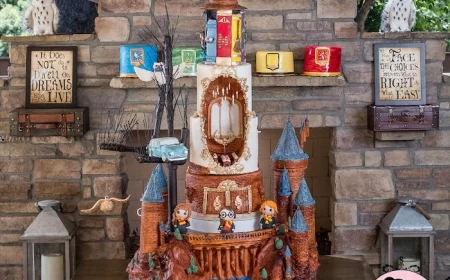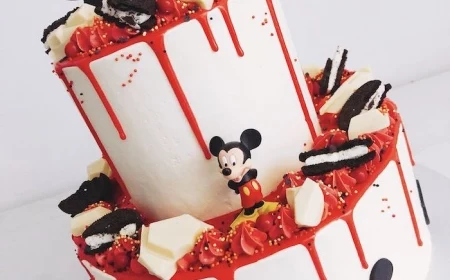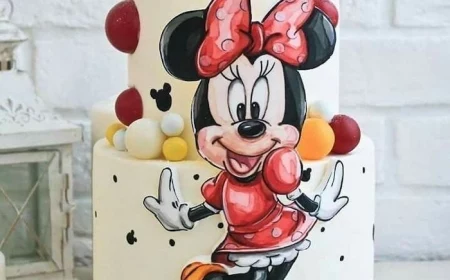How to Plan a Teen Birthday Party That Doesn’t Suck (A Real-Talk Guide)
I’ve been in the event planning game for a long time, handling everything from slick corporate gigs to cozy family celebrations. But let me tell you, honestly… few things are as uniquely challenging as planning a party for a teenager. I once worked with a family whose son wanted a “dystopian sci-fi” party. The parents were picturing a classic film, all sleek and futuristic. The son? He was thinking of a gritty, grim video game. The disconnect was instant.
In this article
We eventually found a middle ground, but it hammered home a vital lesson. Planning a party for your teen isn’t about giving them what you think they want. It’s about helping them figure out what they truly want, all while keeping things safe and realistic. It’s a delicate balance, for sure.
Teens are in such a wild stage of life, pulling away from childhood and craving independence. Their social world is everything. A birthday party isn’t just a party; it’s a statement about who they are. They’re looking for something that feels genuinely them, not a stuffy event orchestrated by their parents. Your role isn’t just to be the bank and the chauffeur. You’re the project manager, the safety consultant, and the quiet collaborator. This guide is built on that idea. It’s not just a list of themes—it’s a practical framework for working with your teen to create a day that’s fun, safe, and actually memorable.

The Foundation: It Starts with a Conversation, Not a Command
Before you even think about booking a venue or buying a single decoration, you have to talk. And how you kick this off sets the tone for the entire experience. Please, don’t start with, “So, what kind of party do you want?” That question is way too big and can be overwhelming. It can also put them on the defensive, assuming their brilliant ideas will get shot down immediately.
Instead, approach it like a casual consultation. I call it the ‘Collaborative Kick-off.’ Find a relaxed time—not when they’re rushing through homework or heading out the door. Try an open-ended statement like, “Your birthday is coming up, and I’d love to help you plan something cool with your friends. What are your initial thoughts?”
By the way, what if they just shrug and say, “I don’t know”? This happens all the time. A great, low-pressure move is to just scroll through Pinterest or even TikTok party ideas together on the couch. No decisions, just looking. It’s a simple way to get the visual ideas flowing without any pressure.
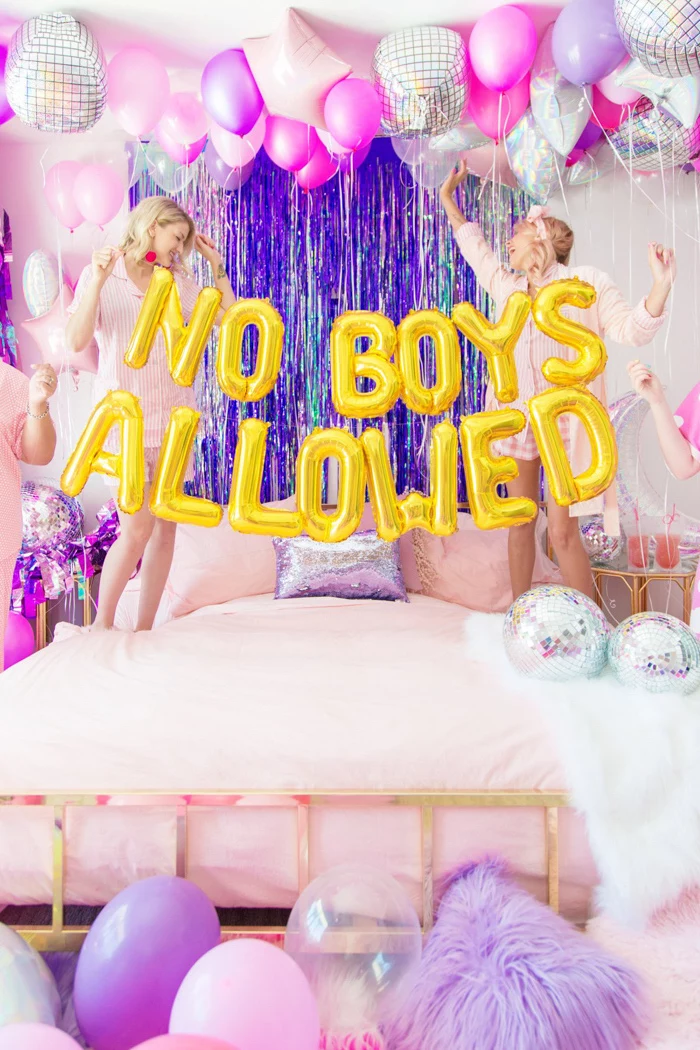
Key Questions for That First Chat:
- Start with the Guest List: Before you get lost in themes, ask: “Who are the absolute must-have people you want to celebrate with?” The number of guests is the biggest factor that dictates your budget and location. A chill hangout for 10 close friends is a totally different beast than a bash for 40 classmates.
- Talk Vibe, Not Theme: Let’s be real, the word “theme” can sound a little childish to a teen. So, ask about the “vibe” instead. Use prompts like: “Are you thinking something active and high-energy, or more of a relaxed hangout?” or “Would you rather be outdoors, or do something inside?”
- Learn from the Past: Ask about parties they’ve actually been to. “What was the best party you went to in the last year? What made it so cool?” And, just as important: “Been to any that were boring or awkward? What went wrong?” This gives you incredible insight into what they hope for and what they’re scared of.
This simple shift in how you start the conversation shows you respect their opinion and makes them a partner in the project. It’s their party, and you’re their experienced consultant. Honestly, this approach prevents most of the arguments that usually plague teen party planning.
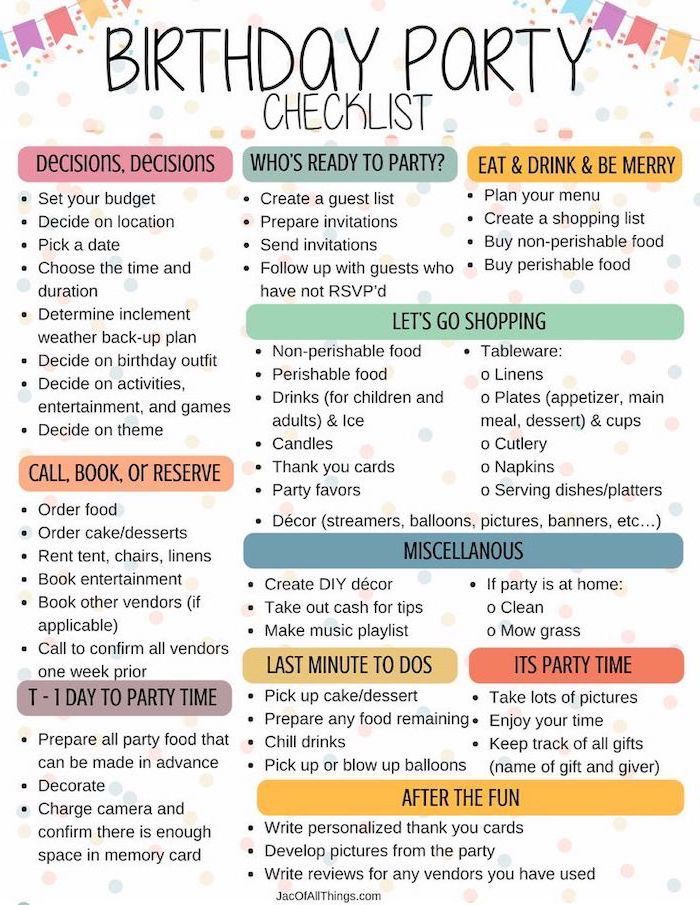
The Blueprint: A Planner’s Approach to a Teen Party
Okay, once you have a rough guest count and a vibe, it’s time to build the actual plan. A little structure now means you can be way more flexible later. It’s all about creating a solid foundation.
The guest list is the heart of the party, and yeah, it can be a minefield. For a teen, it’s a public declaration of friendships, so handle it with care. Sit down with your teen and an actual list. Talk through the ‘why’ for each person. Sometimes, a teen feels obligated to invite someone they don’t truly want there. Giving them permission to stick to their real friends can be a huge relief.
Heads up! A firm rule I always follow: once the list is final, it’s final. Adding people last minute creates stress and logistical nightmares. It messes with food counts, space, and the overall vibe. I once saw a party spiral because a few uninvited guests showed up, creating social drama and overwhelming the space. Set that boundary early.
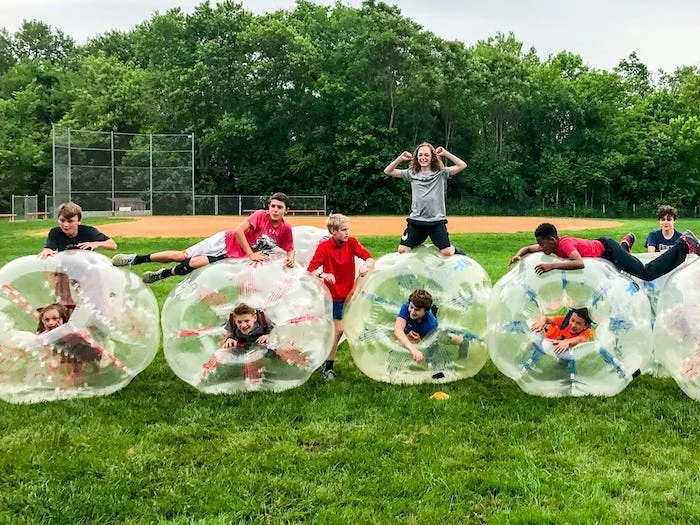
2. The Budget: Where to Splurge and Where to Save
Be totally transparent about the budget. Teens often have no idea that a DJ can cost hundreds of dollars or how quickly food costs add up. Don’t just give them a number; break it down together. I use a simple list of categories:
- Venue/Location: (If you’re not hosting at home).
- Food & Drinks: (Often the biggest slice of the pie).
- Activities/Entertainment: (Think DJ, photo booth, game rentals).
- Decorations & Supplies: (Plates, cups, etc. A great area for DIY savings!).
- The Just-in-Case Fund: Seriously, always set aside 10-15% for surprises. It will get used.
This little exercise is a sneak lesson in financial literacy. It forces them to make choices. If they want that expensive DJ (which can run you $300-$800 for a few hours), they might need to compromise on elaborate decorations. A great alternative? A premium Spotify account and a rented speaker system, which you can often get from a local party store for about $75 for the night. Guests remember great food and fun activities, not fancy napkins.
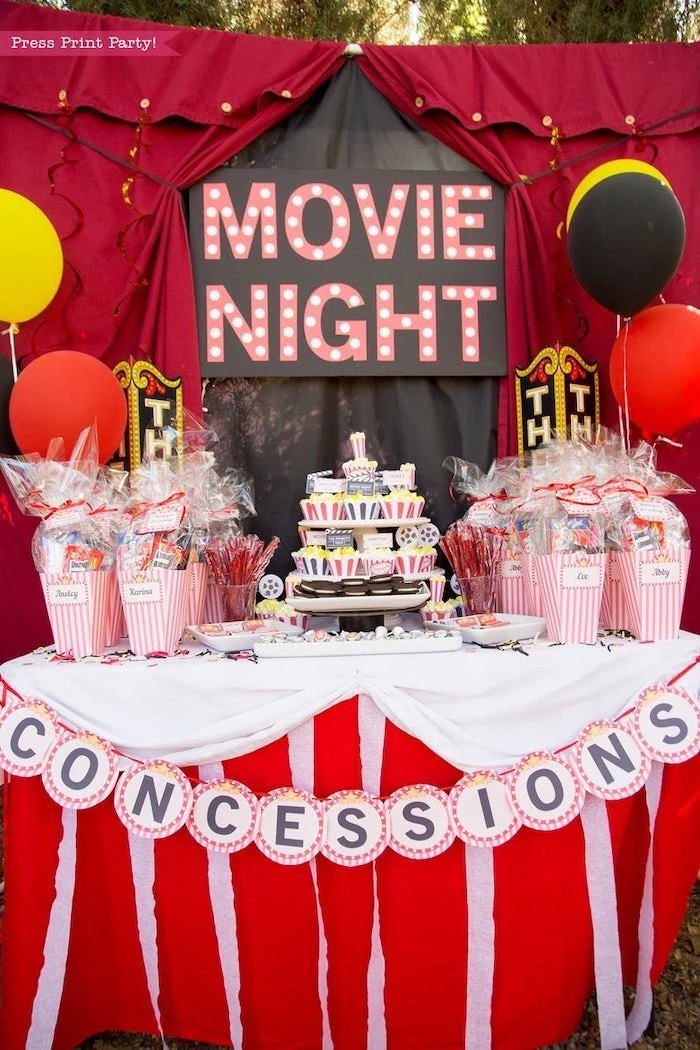
3. The Venue: Home Base vs. Going Off-Site
Choosing the location is a huge decision. Let’s break it down, planner-style.
Hosting at Home is the classic choice. The big pros are that you have total control, it’s generally cheaper, and you’re more flexible with timing. The cons? Well, there’s the potential for damage, you’re on the hook for 100% of the setup and cleanup, and it can be hard for teens to feel independent with parents right there. A quick tip: If you host at home, create ‘no-go’ zones. Close bedroom doors and put away valuables. Do a walkthrough with your teen to set these ground rules together—it’s all about mutual respect.
Renting a Venue can be a fantastic alternative. The pros are that cleanup is often included, it separates the party from your personal space, and many venues come with built-in activities (like a bowling alley, trampoline park, or a private room at a gaming cafe). The cons are the higher cost, stricter time limits, and less flexibility. A word of caution: if you rent a space like a community hall, always read the contract carefully. Look for clauses on liability, damages, and cancellation. Some places require you to get your own event liability insurance. It’s way better to know this stuff upfront!
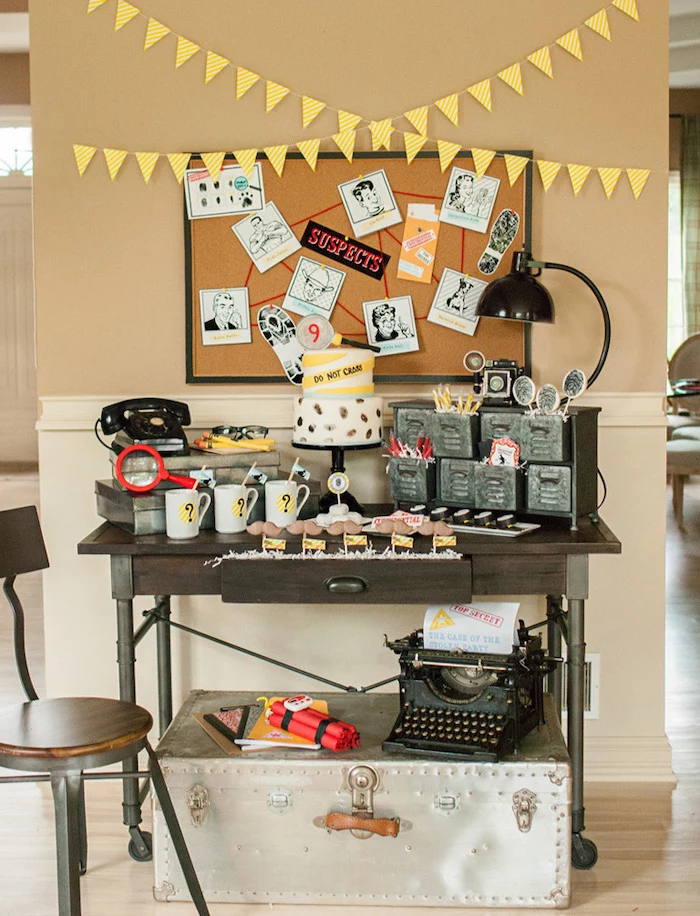
4. The Timeline: Your Sanity-Saving Checklist
Spontaneity is for the guests, not the planner. A timeline is your best friend for avoiding that last-minute chaos.
- 6-8 Weeks Out: Have that ‘Collaborative Kick-off.’ Finalize the guest list, budget, and date. If you’re using a venue, book it now.
- 4-5 Weeks Out: Send out invites. Digital is totally fine for teens, but give a clear RSVP deadline. Start planning the menu and book any entertainment (DJ, photo booth, etc.).
- 2-3 Weeks Out: Buy all the non-perishable stuff—decorations, paper goods, craft supplies. Follow up on any missing RSVPs.
- 1 Week Out: Make a detailed grocery list. Create a master timeline for the day of the party. I always call to re-confirm with any vendors. I learned that the hard way after a rental company missed a delivery once.
- 2-3 Days Out: Do the big food shop. Start any prep that can be done ahead of time.
- The Day Before: Do a major house clean if you’re hosting. Set up all your decorations. Grab any last-minute items.
- Party Day: Prepare the food, do a final walkthrough, and review the plan with your teen one last time. Then, try to breathe.

Crafting the Experience: Food, Vibe, and Fun
This is the fun part! The goal is to create an environment where teens feel comfortable and engaged.
Food Strategy: Grazing Stations for the Win
Teens rarely want to sit for a formal meal at a party. They want to graze, chat, and move around. Food stations are the absolute best way to feed them. They’re interactive and cater to picky eaters.
- Taco or Nacho Bar: A total classic for a reason. It’s customizable and delicious.
- Burger or Slider Bar: Pre-cooked patties kept warm in a slow cooker, with all the fixings.
- DIY Pizza Station: Use pre-made crusts (naan bread works great!) and let them top their own.
Let’s make this real. For a Taco Bar for about 20 teens, your shopping list might look something like this: 3 lbs ground beef, 2-3 taco seasoning packets, 2 large bags of tortilla chips, 30-40 taco shells (hard and soft), 2 large jars of salsa, a big tub of sour cream, 2-3 bags of shredded lettuce, and at least 3-4 bags of shredded Mexican cheese blend. Don’t forget toppings like jalapeños and onions!
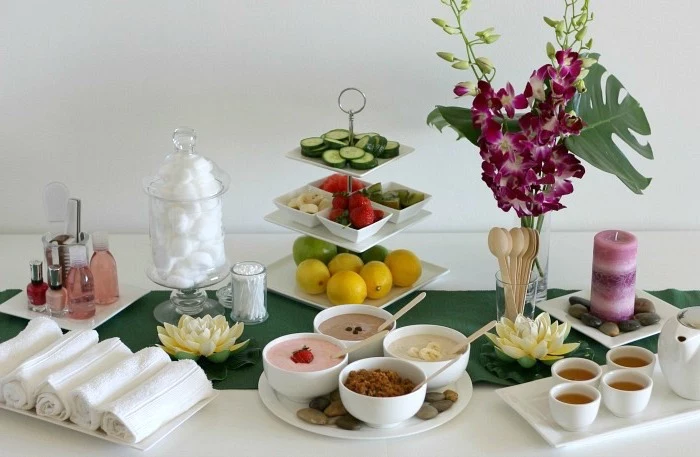
A quick but serious note on food safety: If you’re hosting outside in warm weather, be vigilant. Keep cold foods on ice (under 40°F/4°C) and hot foods hot (above 140°F/60°C). Don’t leave perishable food out for more than two hours. It’s a simple rule that prevents a world of hurt.
Activities That Don’t Cause Eye-Rolls
The key to teen activities is what I call ‘structured freedom.’ They should be available and fun, but totally optional. Forced fun is the enemy.
- Creative Stations: A tie-dye station is a classic hit. Or try a ‘decorate your own’ station for plain canvas sneakers or water bottles. The guests get a cool, personalized party favor to take home.
- Low-Stakes Competitions: A video game tournament on a big screen (you can rent a projector and screen online for about $100-$150) is great, as long as there’s other stuff for non-gamers.
- The Photo Scavenger Hunt: Update this classic for the digital age. Create a list of creative photo challenges: ‘Recreate a famous meme,’ ‘Take a photo that uses forced perspective,’ etc. Make it easy for them to share! Set up a shared Google Photos album everyone can upload to on the spot, or create a unique, private Instagram hashtag for the party.
- The All-Important ‘Chill Zone’: This is my secret weapon. Not every teen is an extrovert. I always set up a quieter area, maybe a bit away from the main action, with comfy seating like beanbags or floor pillows. It gives kids a place to have a real conversation or just decompress. It shows you get it.
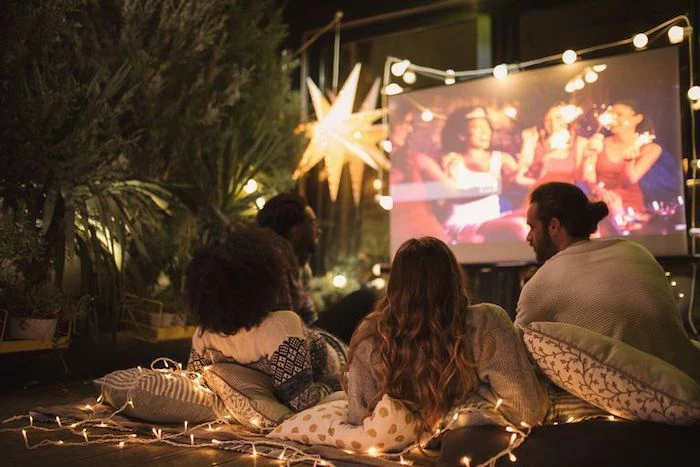
Troubleshooting: When Things Get Awkward
Years of this work teach you to anticipate problems. Here’s how to handle a few common party hiccups.
What if… no one is talking or participating?
This can feel super awkward. The best person to break the ice is the birthday teen. A quiet word beforehand like, “Hey, if you start the tie-dye, your friends will follow,” can work wonders. The host teen really sets the tone.
What if… you spot social drama or a guest who looks left out?
Your job isn’t to be a therapist, but a gentle redirector. See a guest sitting alone? Casually ask them to help you with a simple task, like restocking the snack bowl. It gives them a purpose and a graceful way to move and re-engage without making a big deal out of it.
Safety and Responsibility: The Non-Negotiables
Okay, this is the most important part of the whole guide. Your number one job is to keep every single guest safe. This is where your authority as a parent is absolutely essential.
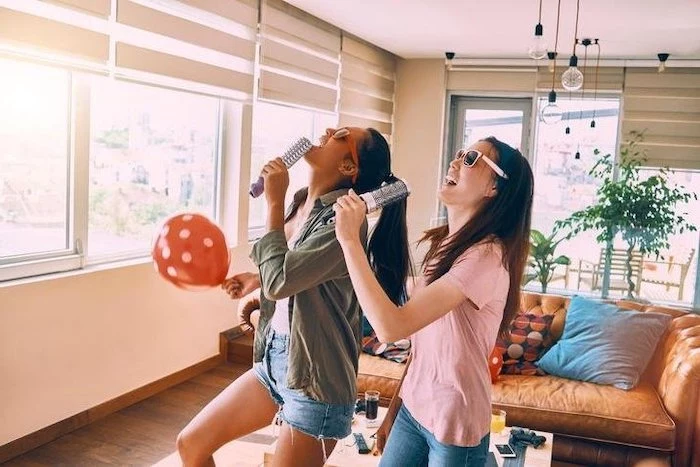
The Alcohol and Substance Policy
The policy has to be zero-tolerance. This is not negotiable. The key is communicating it clearly and calmly. Talk to your teen beforehand. Explain that your job is to keep everyone safe, and you can’t do that if substances are involved. I even recommend putting a polite note on the invitation for parents: “This will be a fun, supervised, and alcohol-free event.”
During the party, be present but don’t hover. A casual walk-through every 30 minutes is perfect. If you suspect a guest has been drinking, you have to act. Quietly pull the teen aside, away from their friends, and call their parents immediately to come get them. It’s awkward, but it prevents a much worse situation.
Supervision: The Art of Being a ‘Ghost Host’
Teens need freedom, but they absolutely require supervision. The trick is to be a ‘ghost host’—visible and available, but not in the middle of everything. My rule of thumb is at least two supervising adults for up to 20 teens. If the party gets bigger, I add one more adult for every 10-15 additional kids. It’s just about having enough eyes and hands to keep things running smoothly.
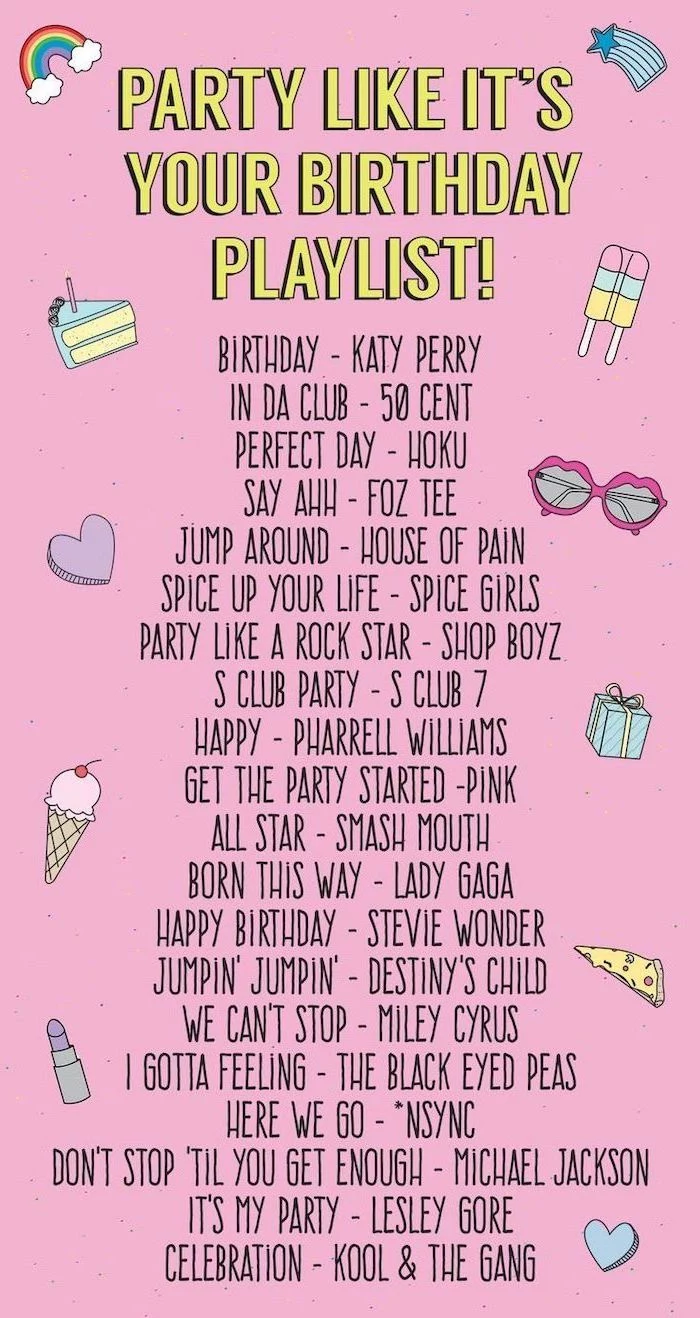
The Exit Strategy
A party needs a clear end time. Put it on the invitation. About 30 minutes before it’s over, start the wind-down. Turn up the lights a bit, lower the music, and start passively cleaning up. And my most important rule: you need to know how every guest is getting home. I stand by the door as kids leave, greeting the parents who are picking them up. This final checkpoint is your last and most important responsibility.
Look, planning a teen party is work. It takes patience and a willingness to see the world through their eyes. But when you get it right, the payoff is huge. You’re not just throwing a party; you’re creating a space where your teen feels seen and celebrated. You’re building trust and making a memory that will last. And that’s a result any pro would be proud of.
Inspiration Gallery
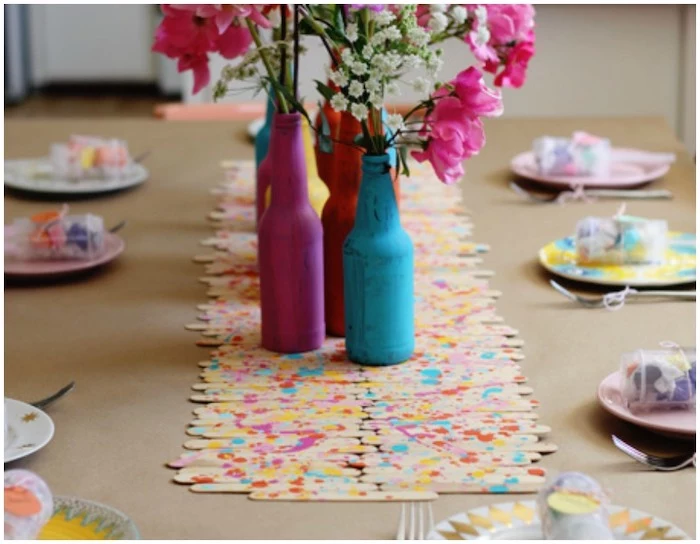
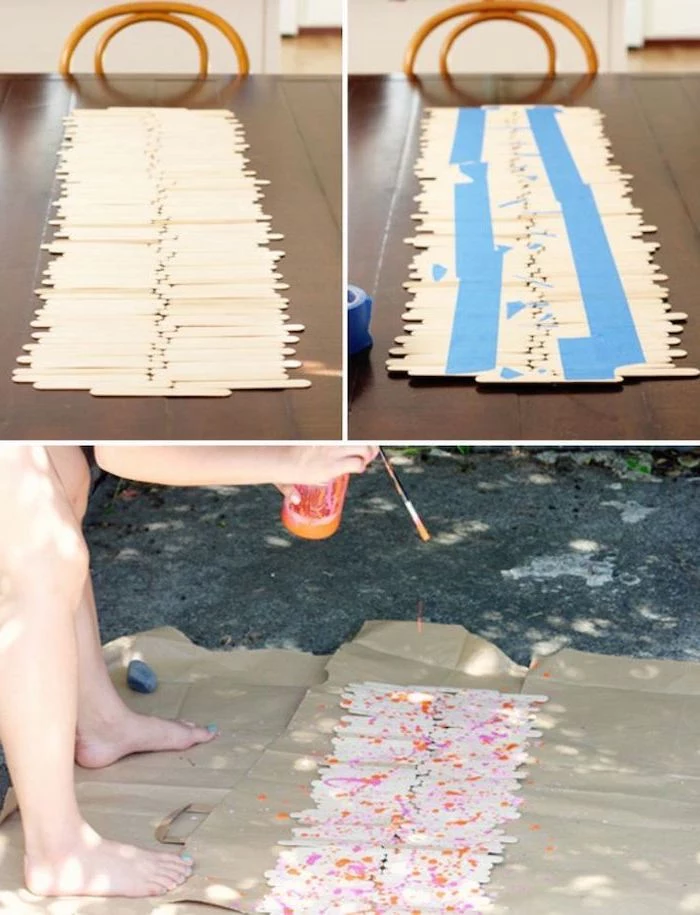
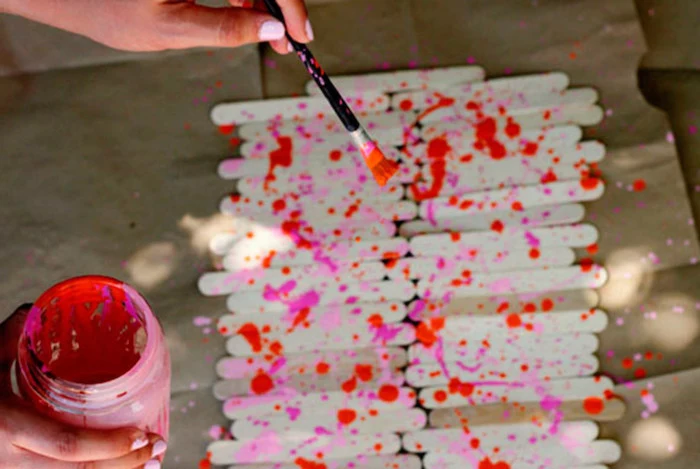

The Guest List is Everything: Before you buy a single balloon, have your teen finalize the guest list. It’s the single biggest factor influencing budget, space, and vibe. A party for 10 close friends is a world away from a 40-person blowout. Settle this first to avoid major headaches later.
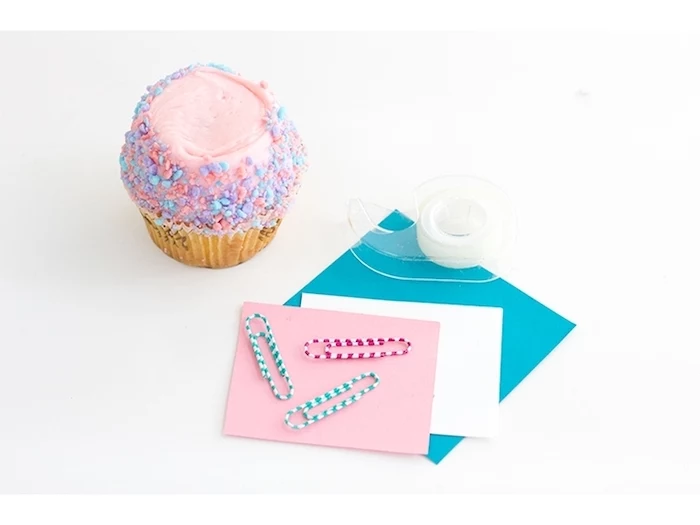
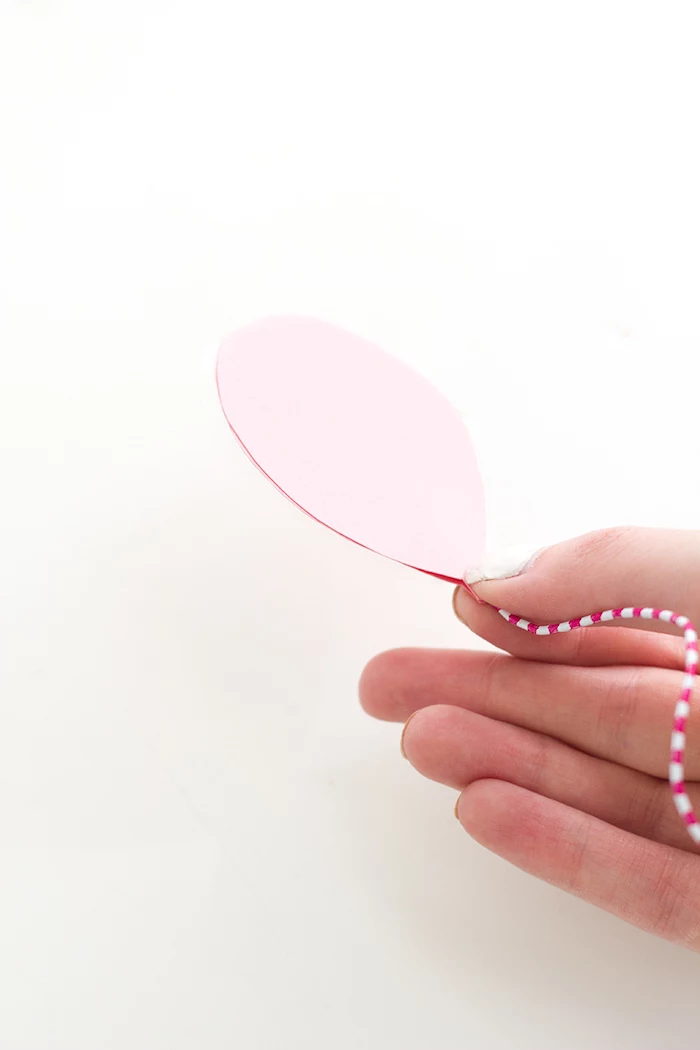
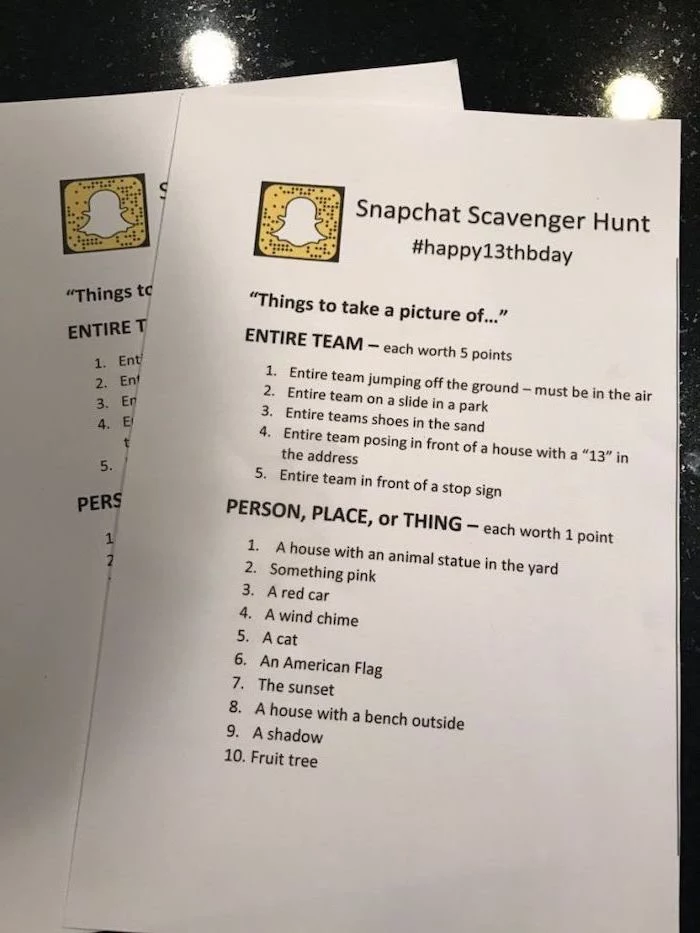
- A collaborative Spotify playlist where guests can add songs before the party.
- A designated “chill zone” with comfy seating, away from the main action.
- A well-stocked charging station for phones—it’s a small detail they’ll really appreciate.
The secret? Focusing on comfort and connection, not just a packed schedule of activities.
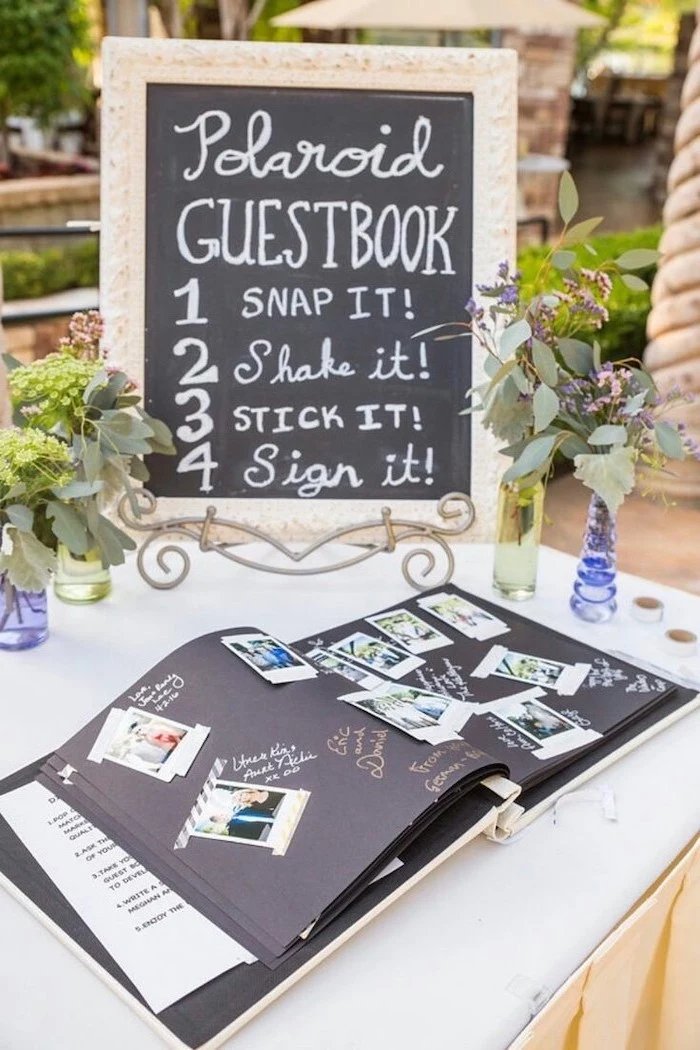
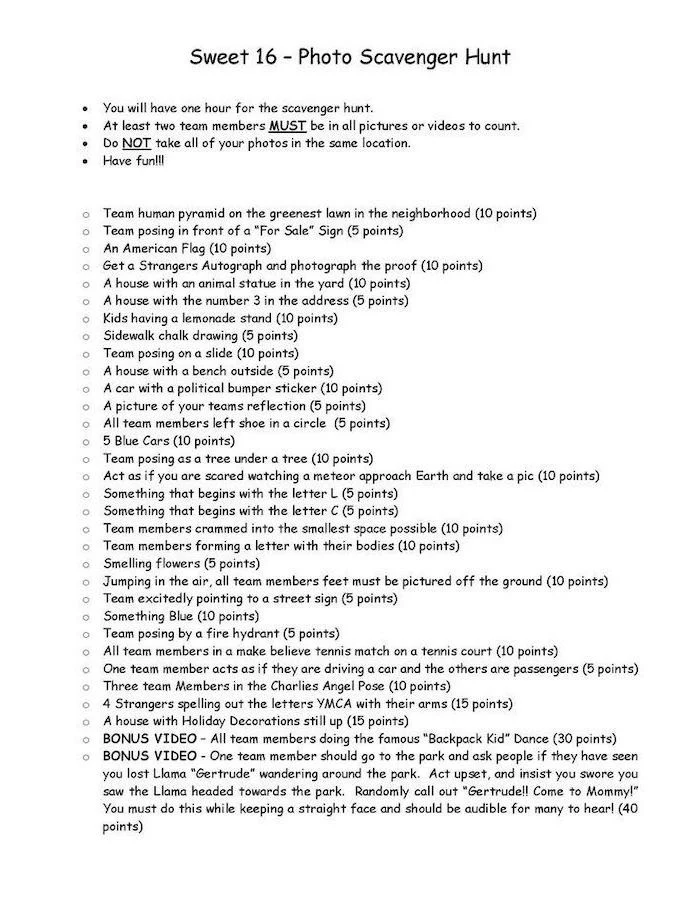
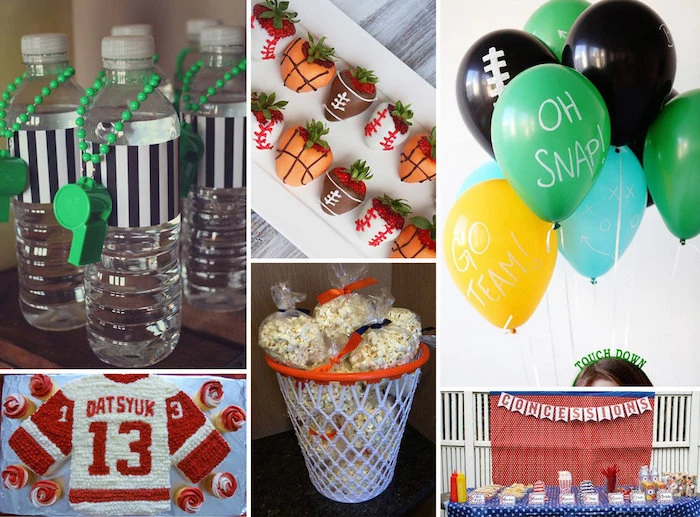
Over 70% of teens say that parties are more about who is there than what they are doing.
This means stressing less about planning a minute-by-minute itinerary and more about creating an environment where they can just hang out. A few anchor activities are great, but leave plenty of room for spontaneous conversation and laughter.
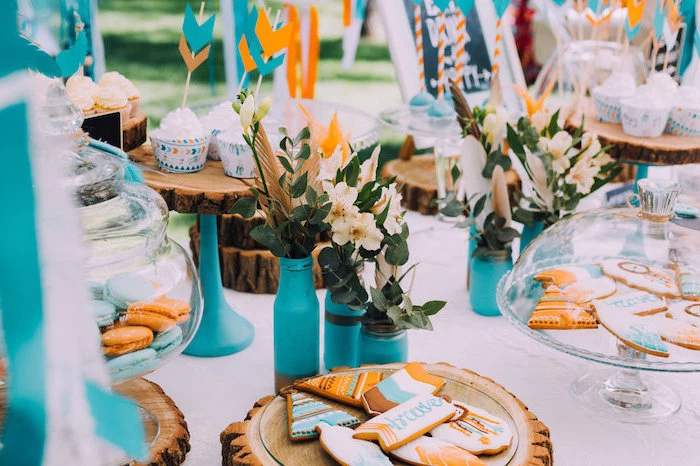
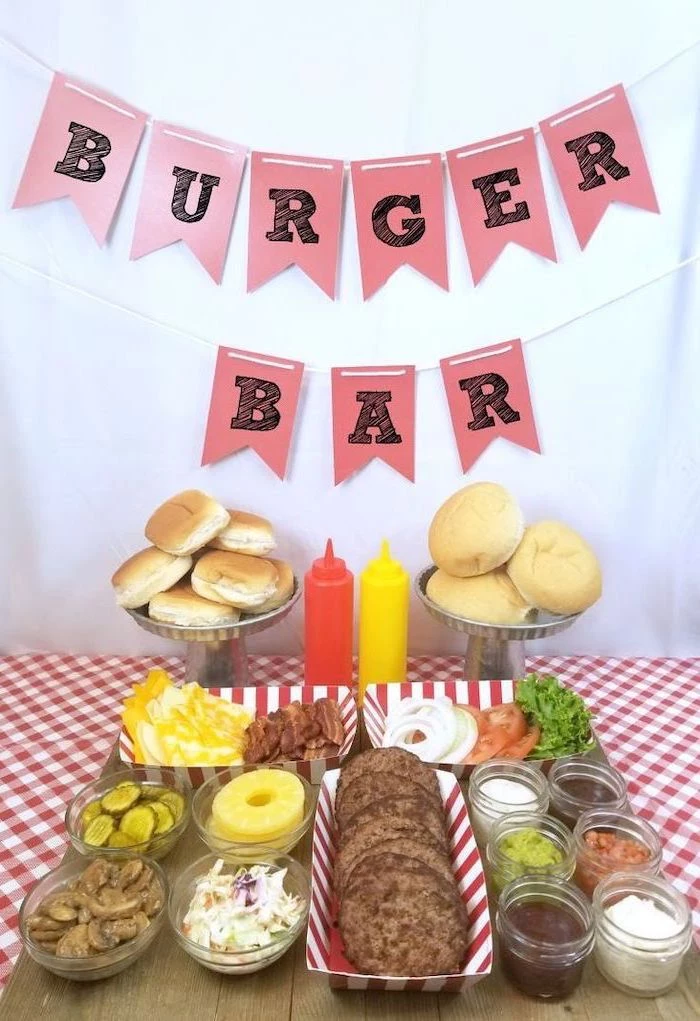
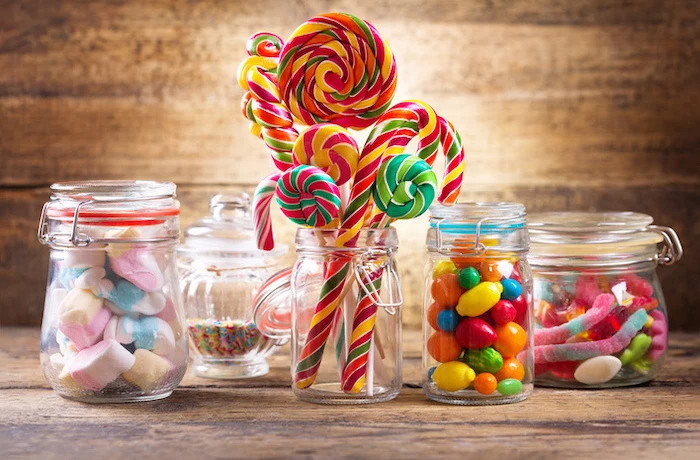
How do we handle the “parent question”?
Be present, but not hovering. Your role is a discreet facilitator and safety net. Welcome the guests, make sure the food and drinks are stocked, and then retreat to another part of the house. Let them know you’re available if needed. This gives them the independence they crave while giving you peace of mind.
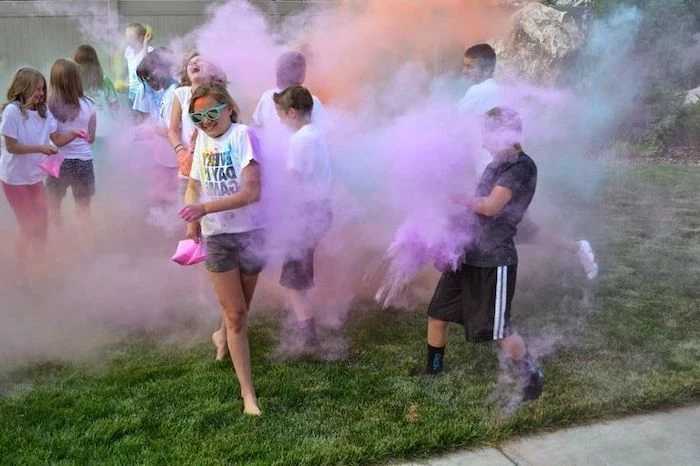
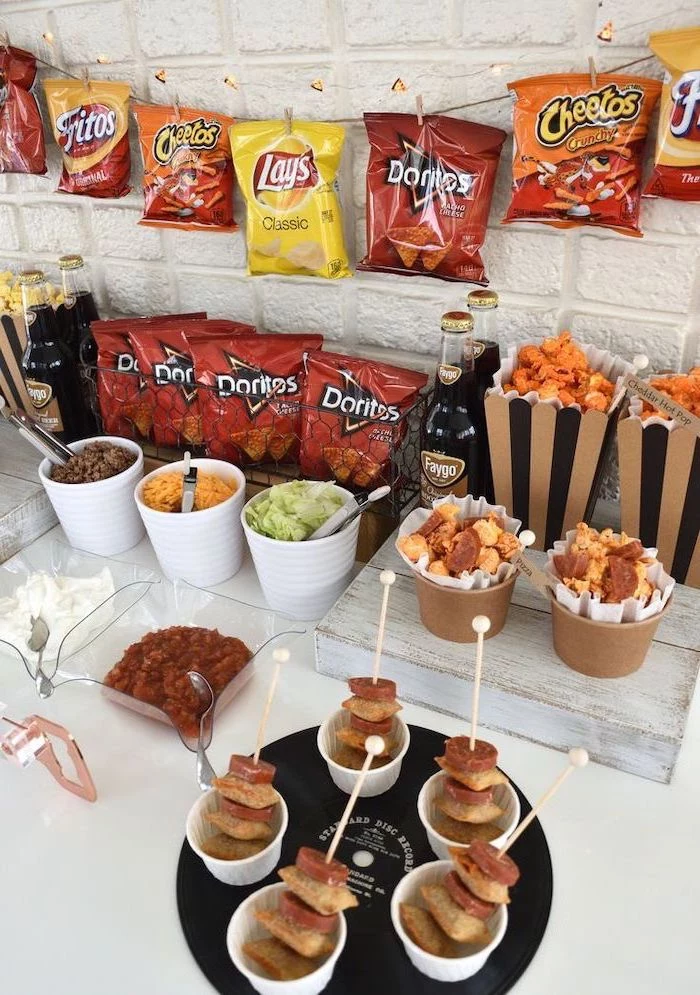
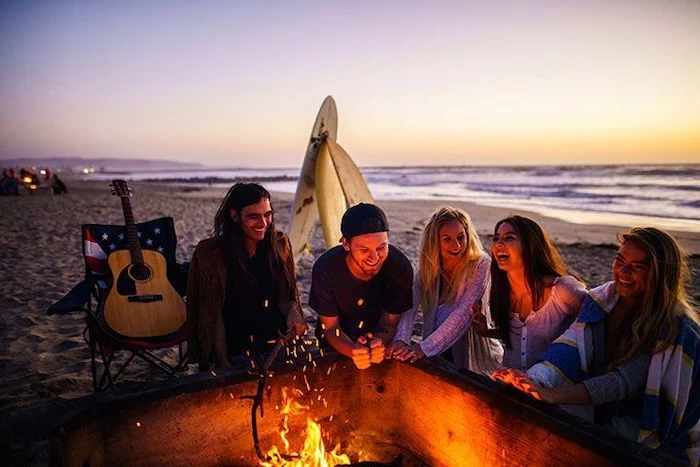
Forget cheesy party bags. For a teen-approved favor, think of something they’ll actually use.
- Individual bags of gourmet popcorn from a brand like Popcornopolis.
- Cool enamel pins or vinyl stickers related to the party’s theme (or inside jokes).
- A single, high-quality item like a fun pair of socks or a portable phone stand.
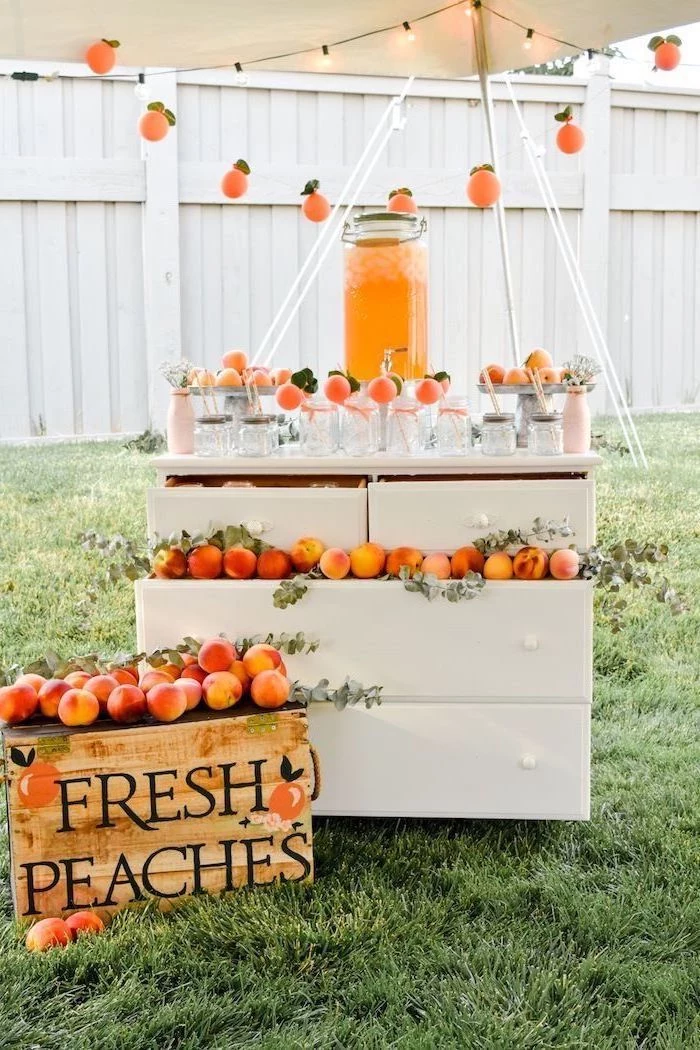
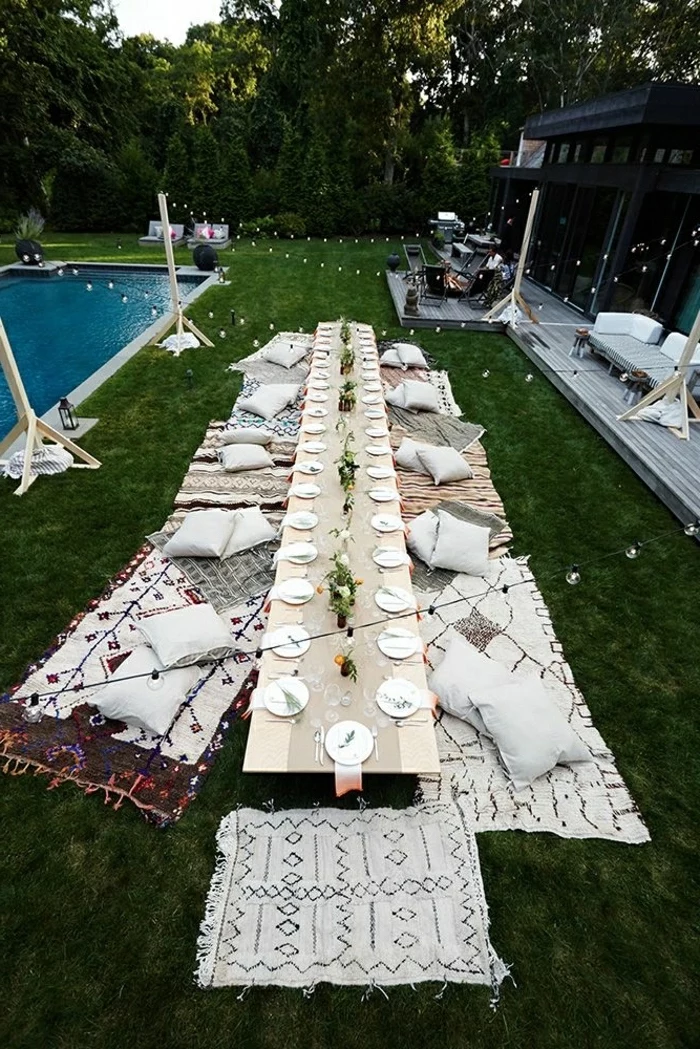
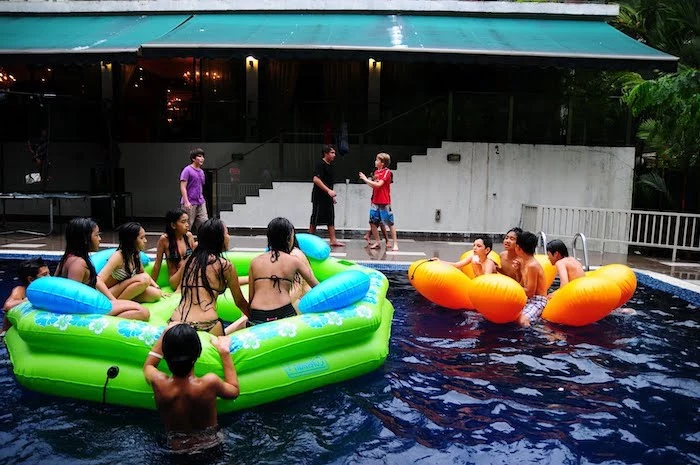
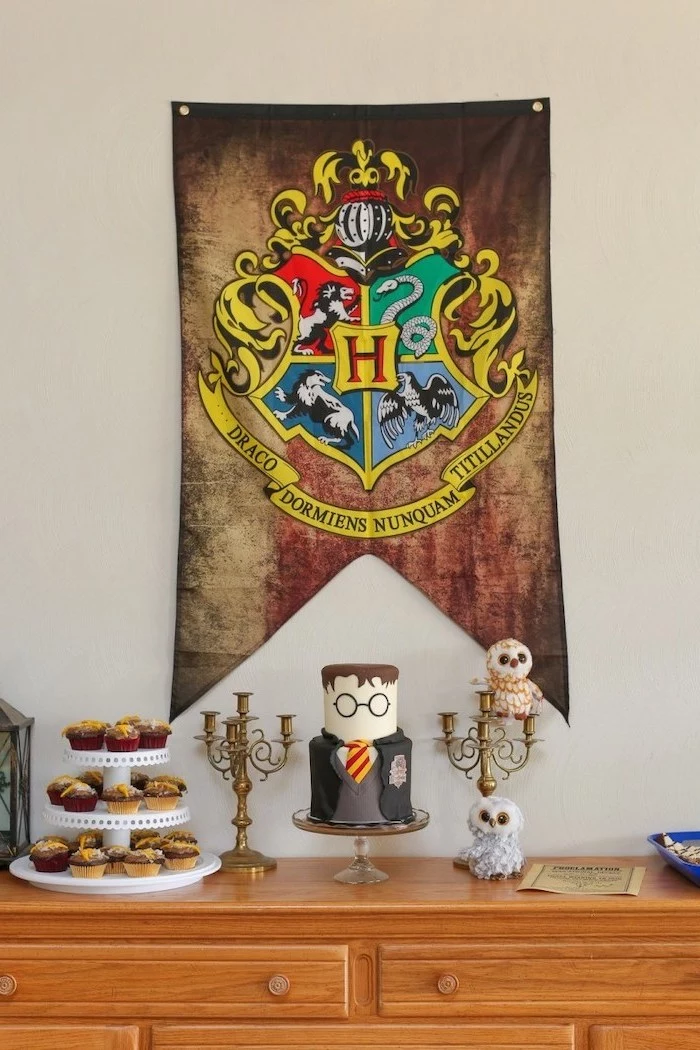
The right lighting can completely transform a boring space into a party zone. Instead of the harsh overhead light, use a mix of table lamps, string lights (fairy lights are always a win), and even some colored LED light bulbs in existing fixtures. For a real ‘wow’ factor, a simple galaxy star projector can turn a ceiling into a mesmerizing night sky.
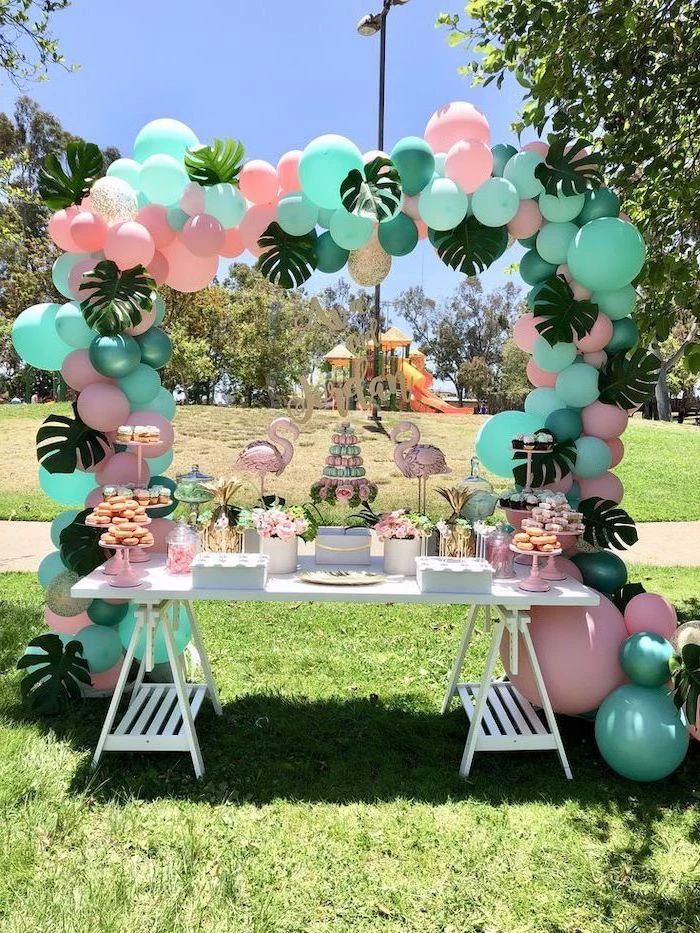
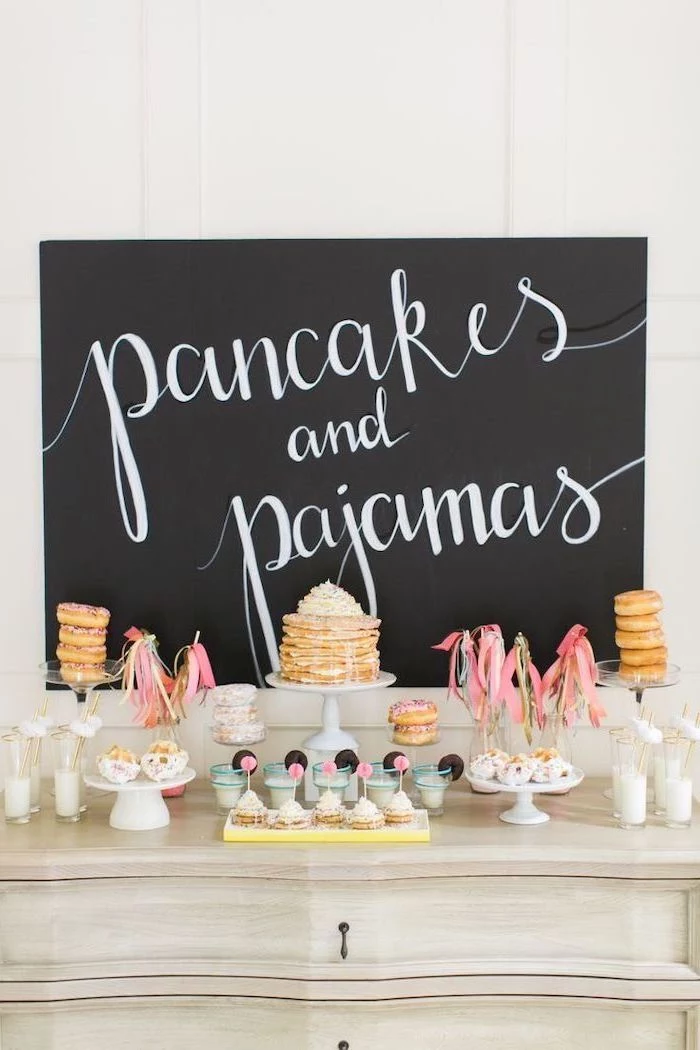
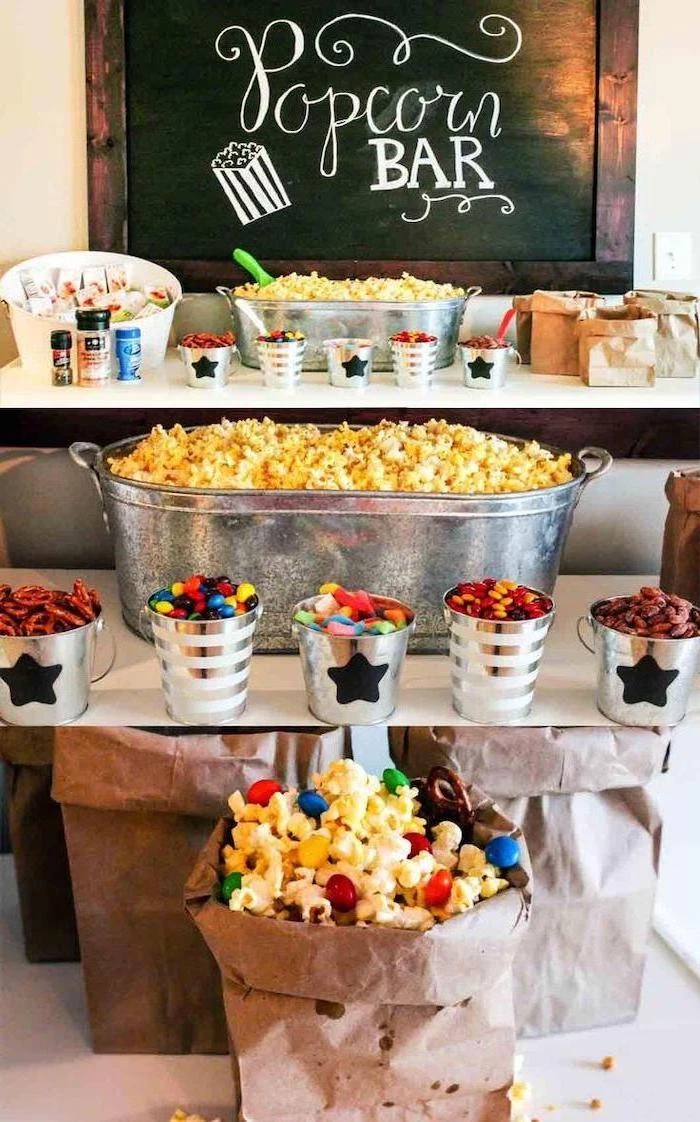
“The best memories aren’t posed; they’re captured.”
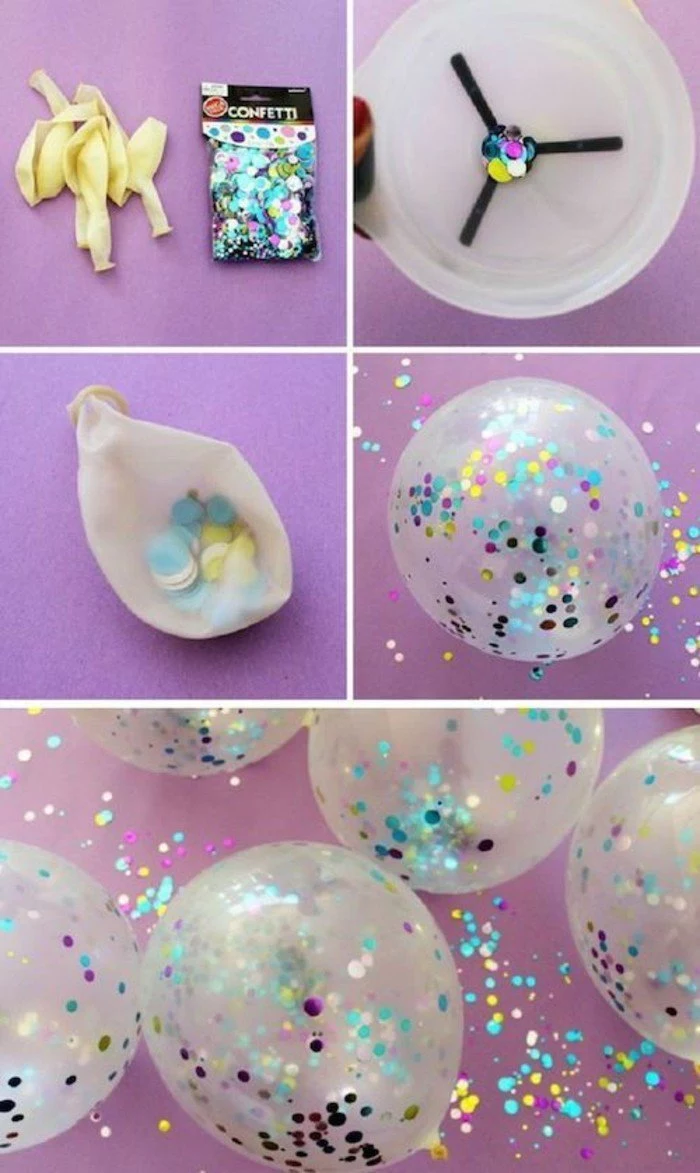
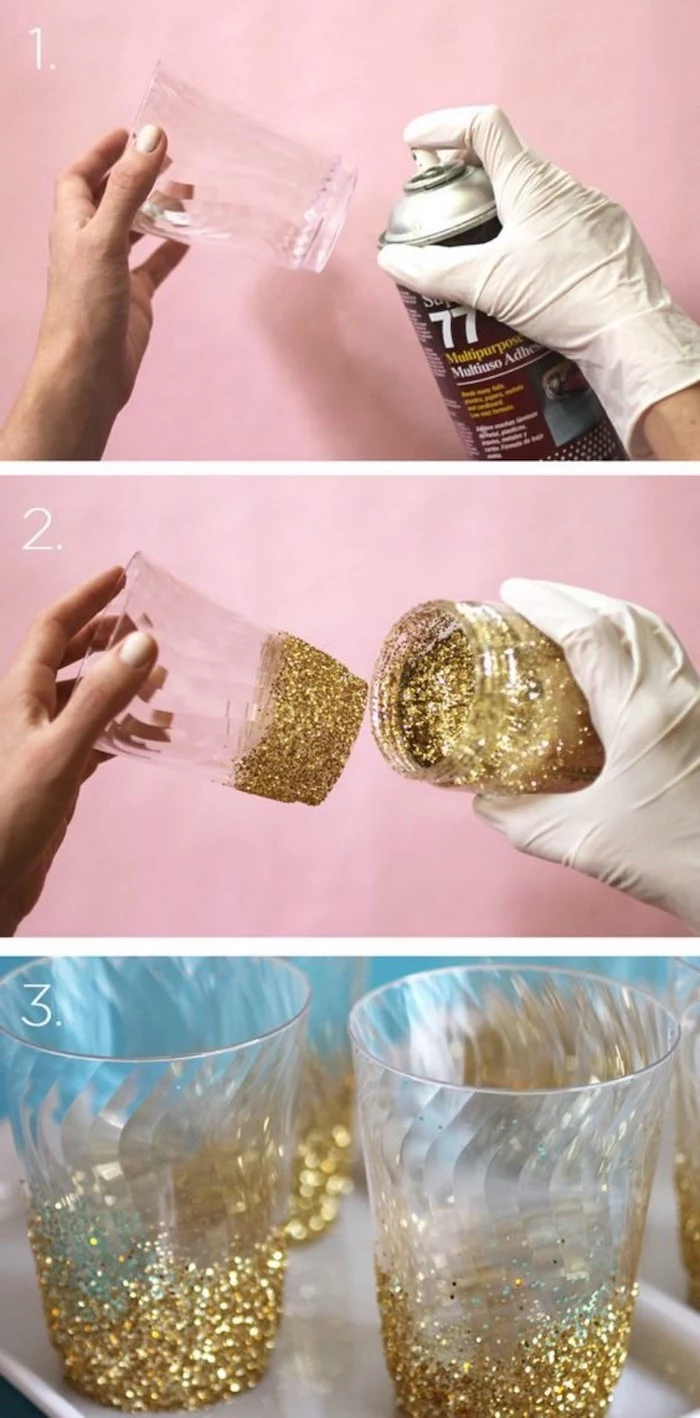
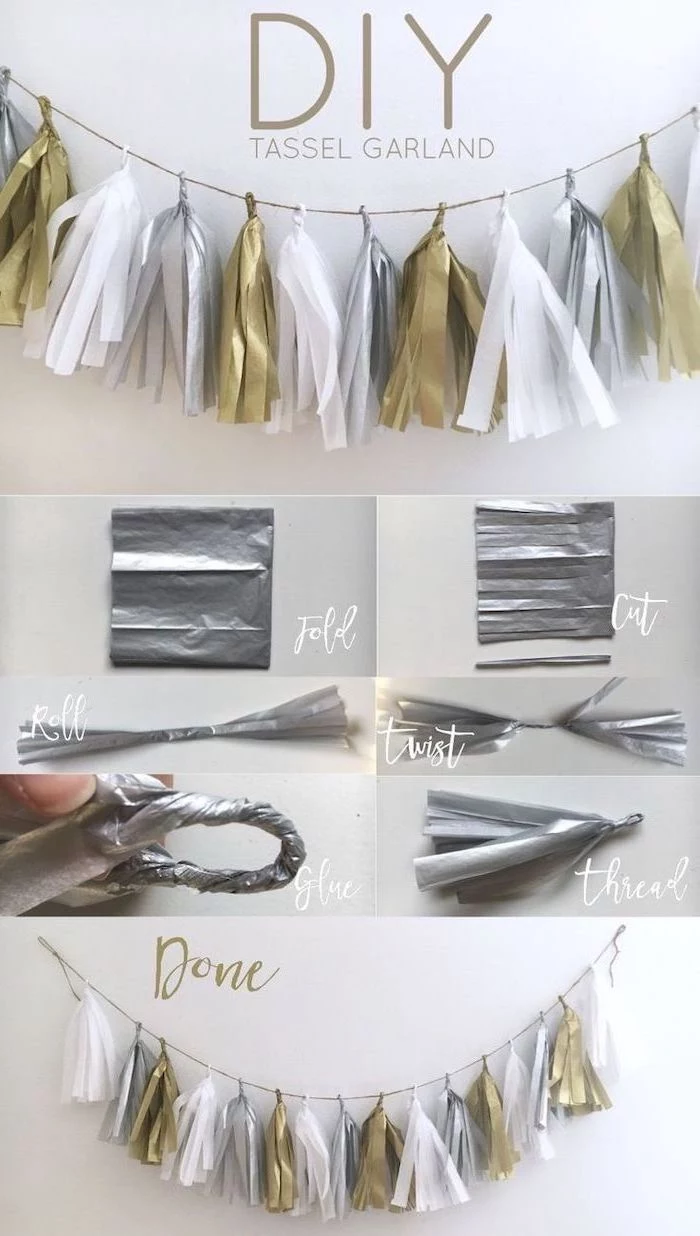
DIY Photo Booth: Create a backdrop with streamers, balloons, or even a cool tapestry. Add a ring light and a box of fun props (silly hats, oversized glasses, meme-related signs). Guests use their own phones.
Professional Rental: A company provides the booth, props, and instant printouts. It’s less work but can be costly, often starting at several hundred dollars for a few hours.
For most teen parties, a well-executed DIY version feels more personal and is just as fun.
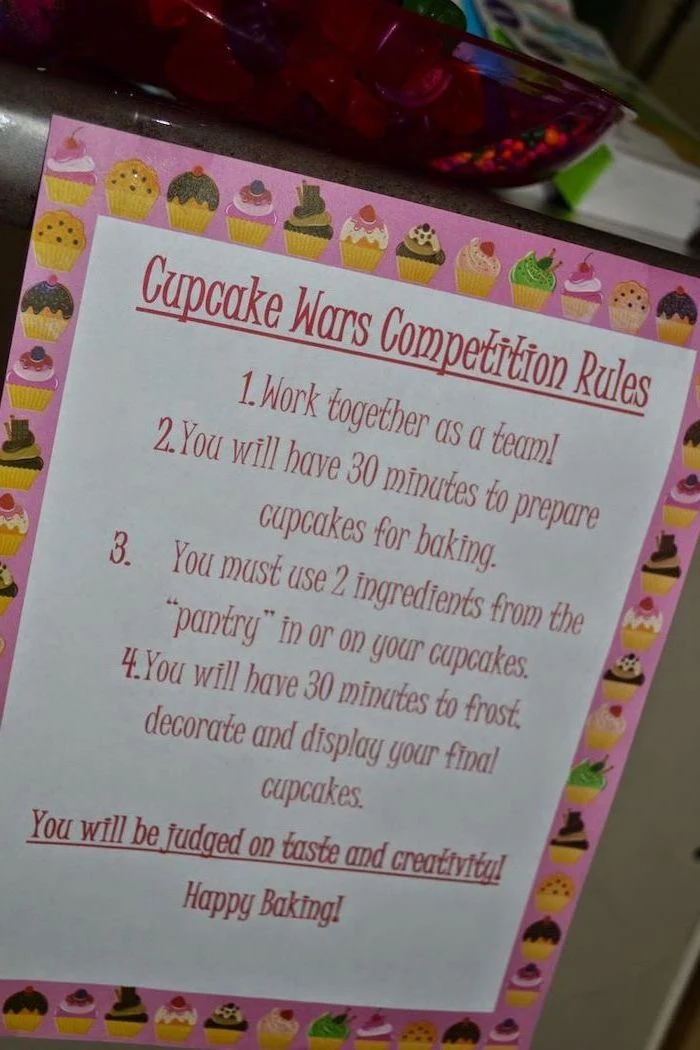
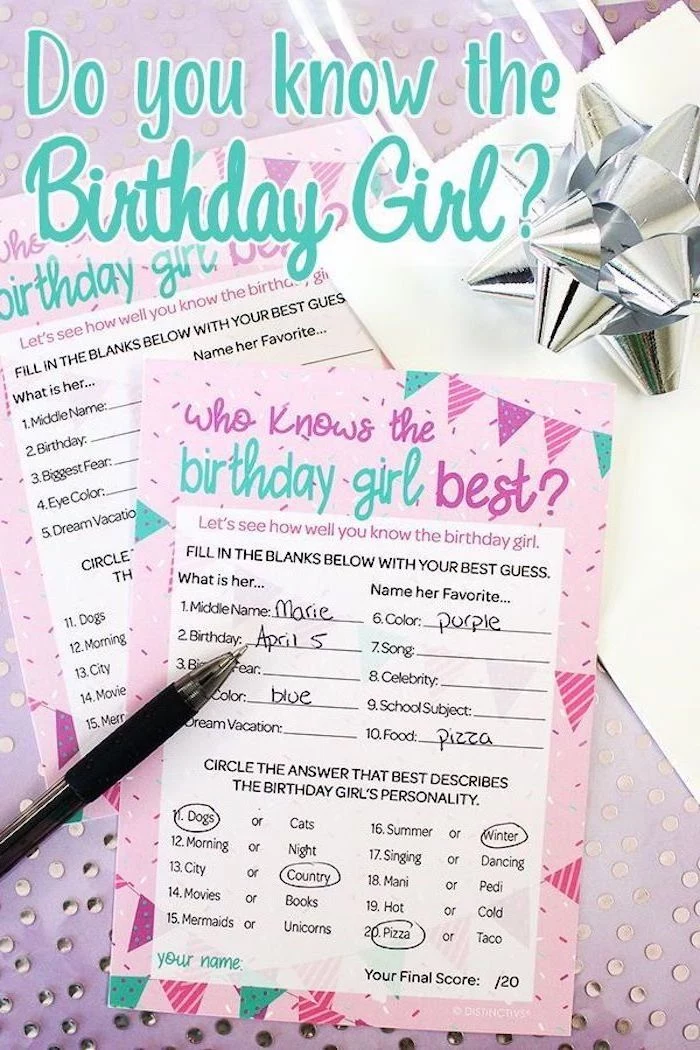
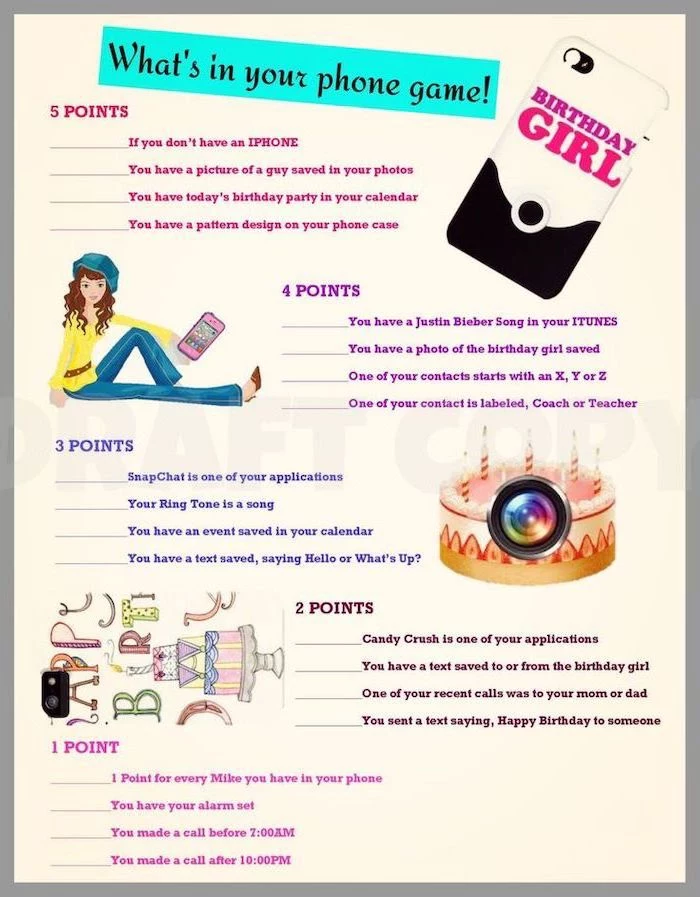
A mocktail bar feels sophisticated and fun. Set up a station with a few types of juice (cranberry, orange, pineapple), some sparkling water or lemonade, and fancy garnishes like fresh berries, mint sprigs, and lime wedges. You can even print a little menu with a few “signature” drink recipes. It’s an interactive activity that makes everyone feel a bit more grown-up.
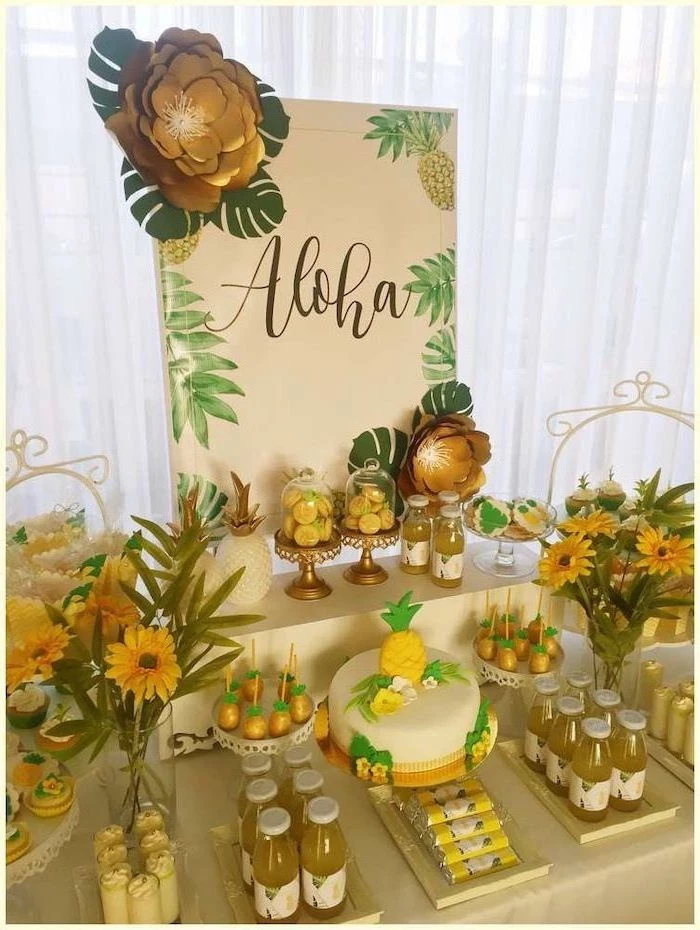
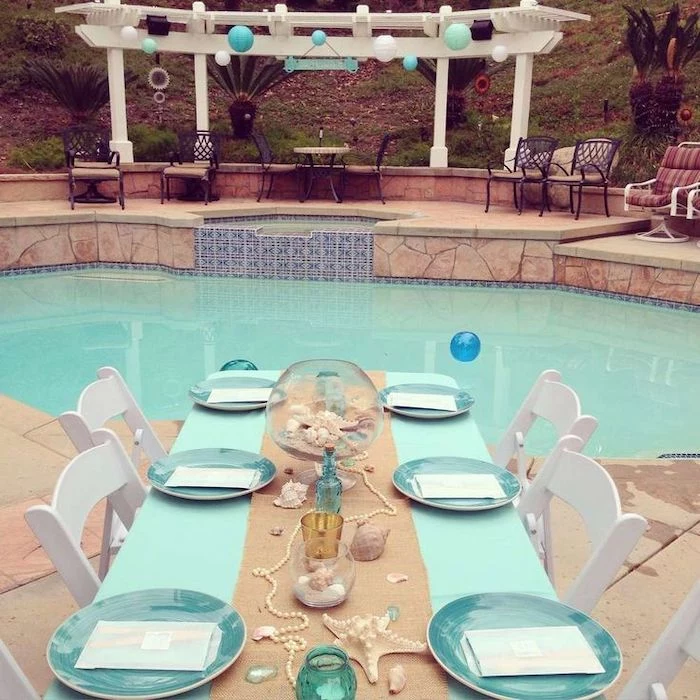
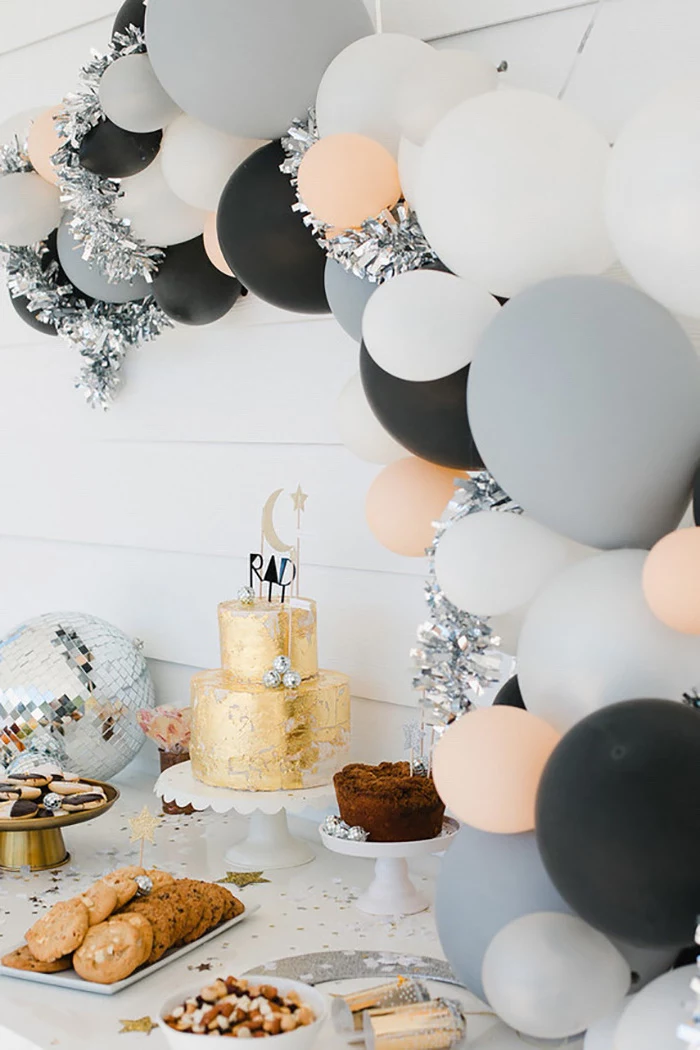
Crucial conversation: The “what if” talk. Before the party, calmly discuss scenarios like an uninvited guest showing up or someone feeling unwell. Frame it as a team plan: “If this happens, what’s our move? Here’s how you can find me discreetly.” It’s not about scaring them; it’s about empowering them.
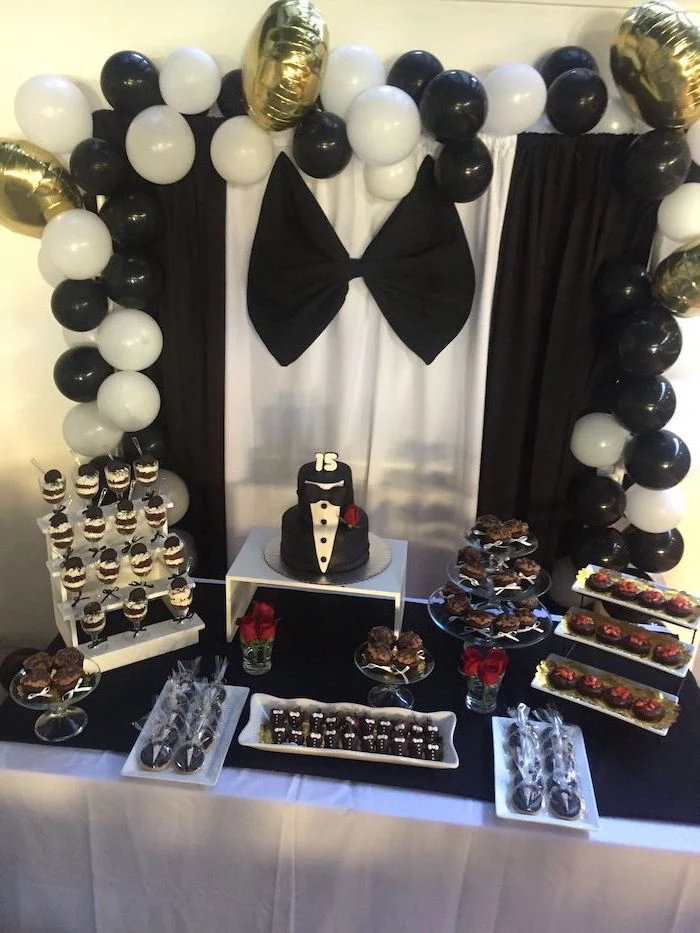
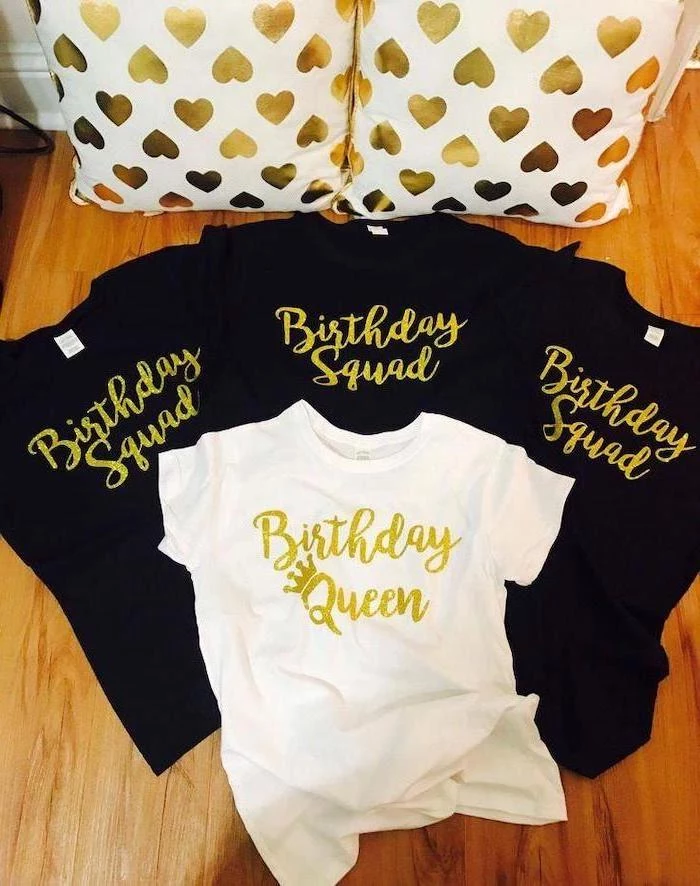
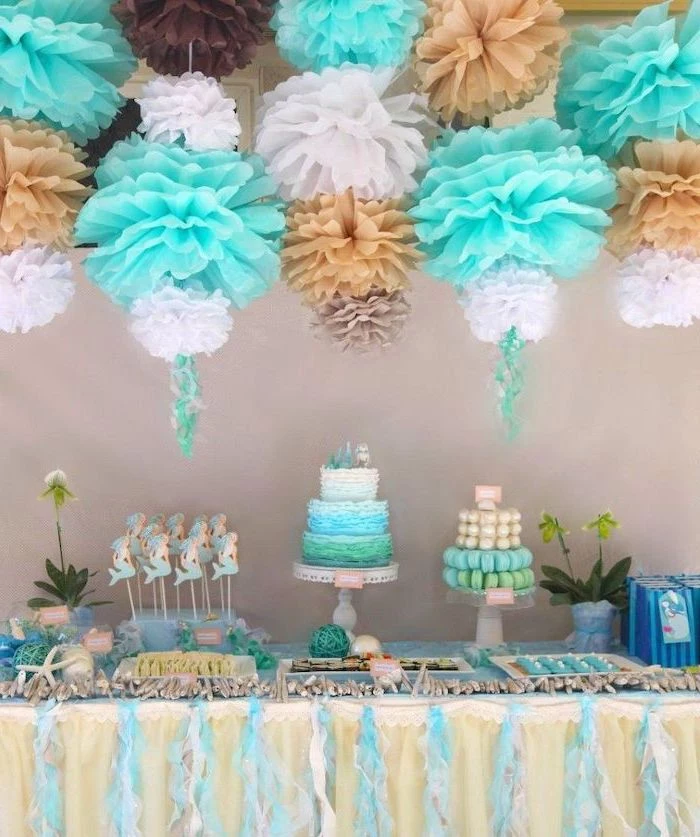
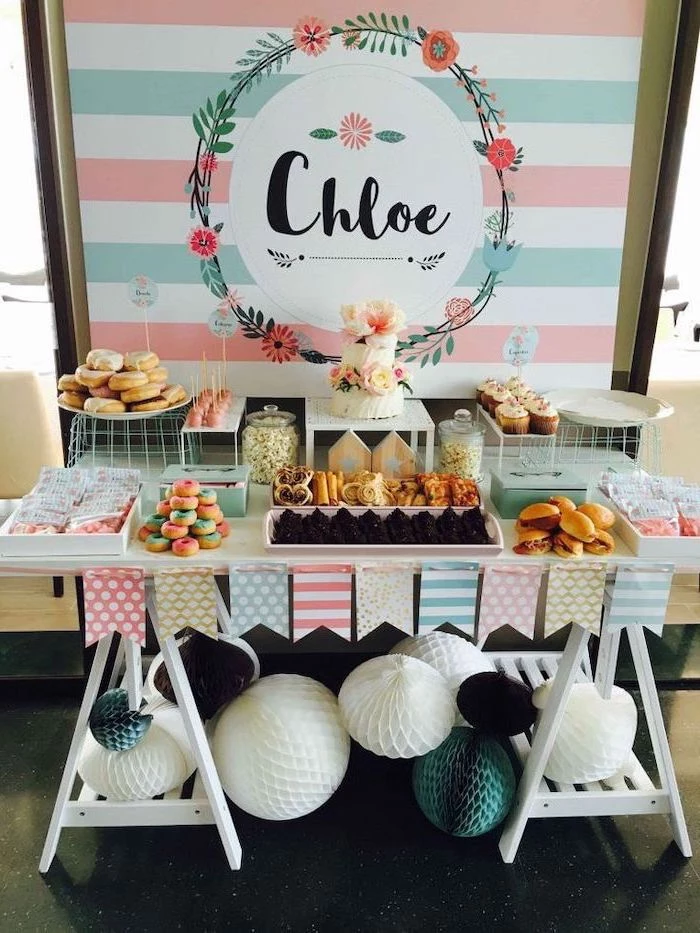
- They feel totally immersed and focused on the game.
- It naturally includes guests who might be a bit shy.
- The setup is surprisingly simple with a projector and a console like a Nintendo Switch.
The secret? A video game tournament. Games like Mario Kart or Super Smash Bros. are perfect because they’re easy for beginners to pick up and create a lively, competitive energy.
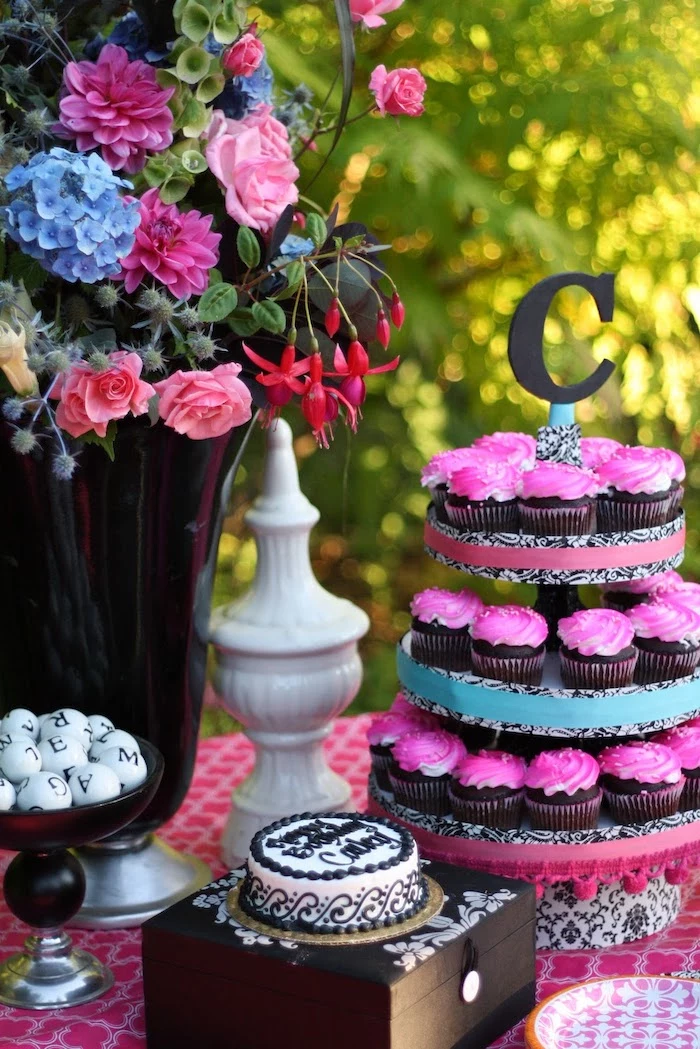
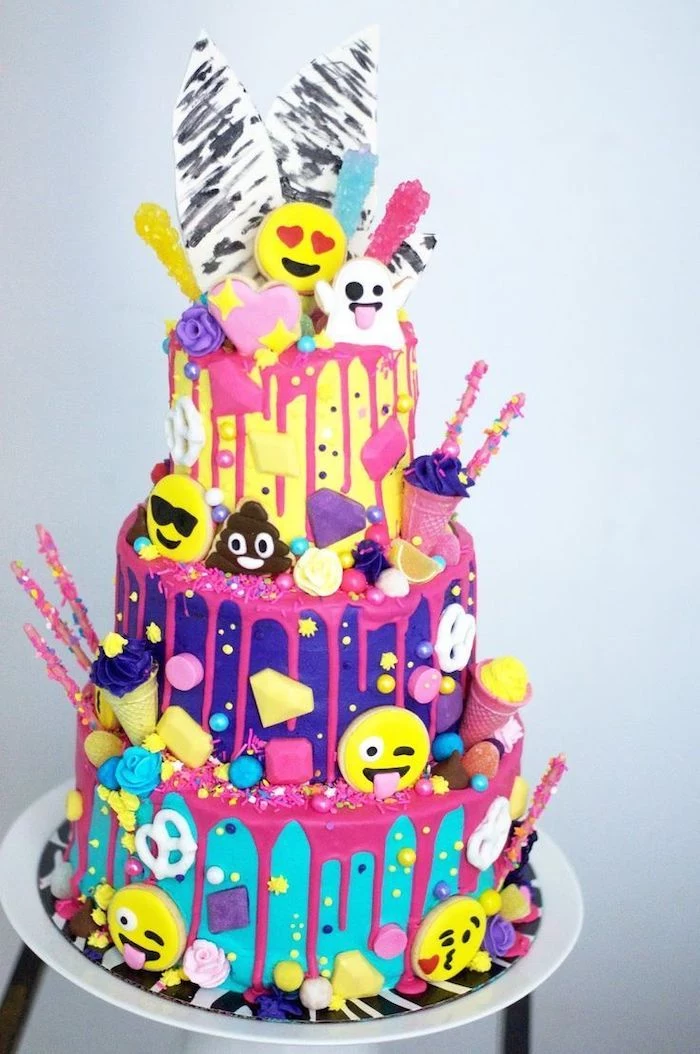
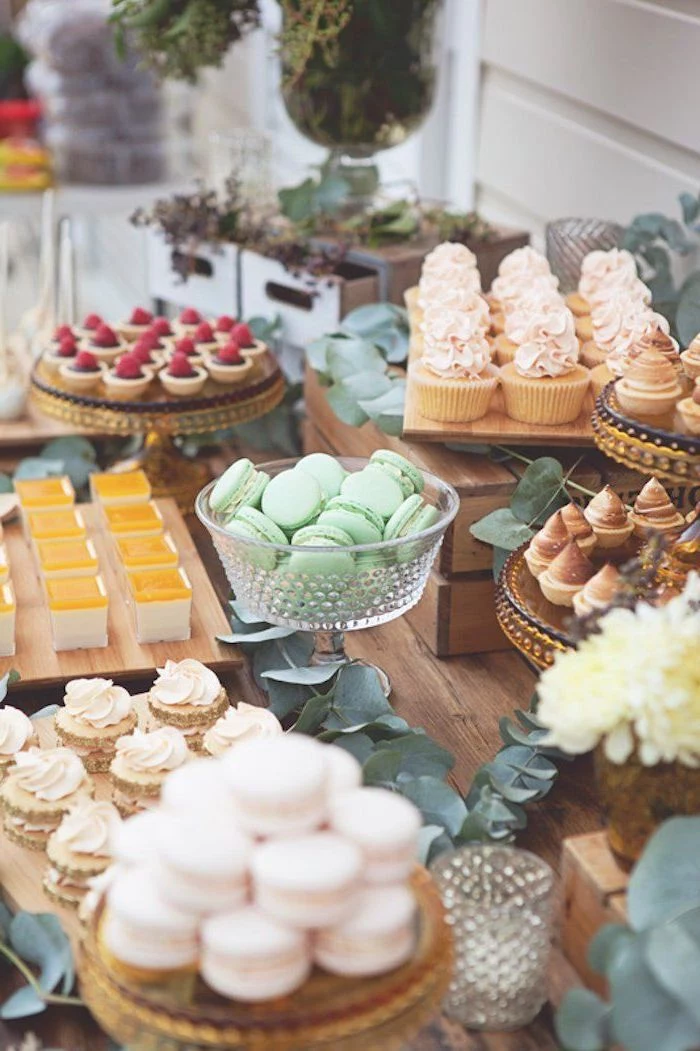
My teen’s dream theme is way over our budget. Help!
Focus on the *feeling* of the theme, not a literal interpretation. For a ‘Parisian Café’ theme, you don’t need to recreate the Eiffel Tower. Think smaller: a playlist of French pop music, a crepe-making station, bistro-style checkered napkins, and a few strings of lights. It captures the essence without breaking the bank.
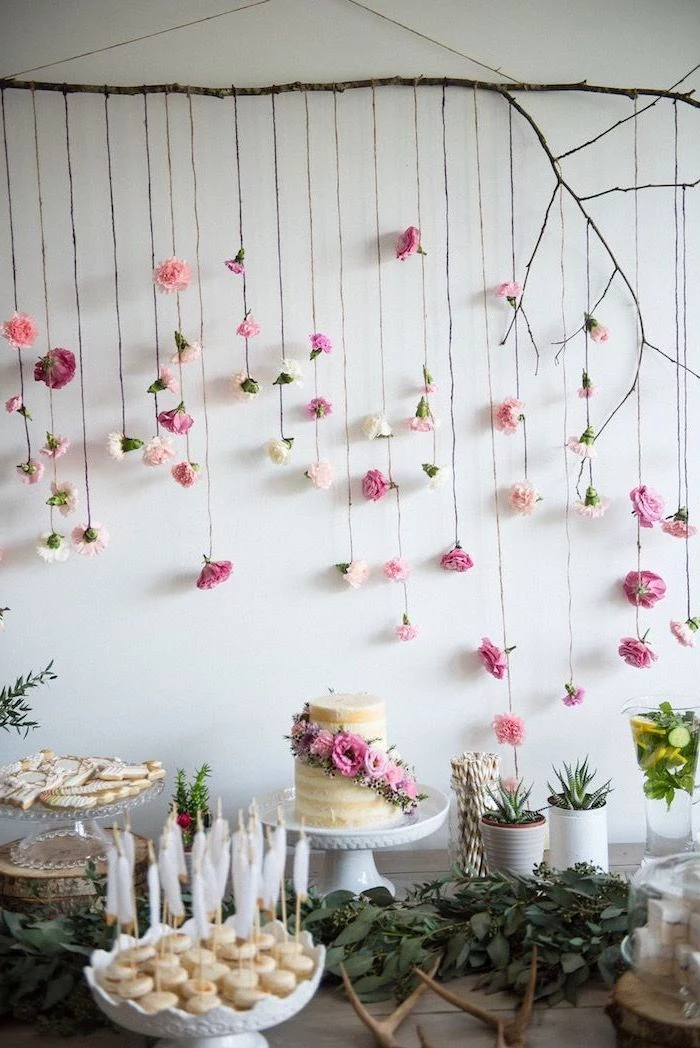

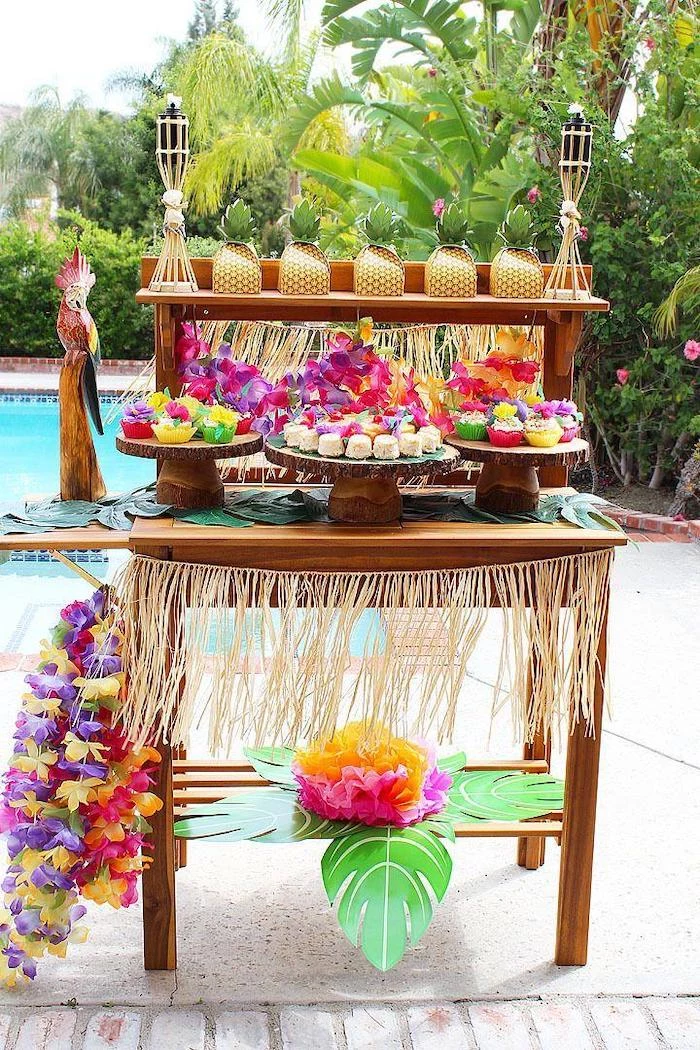
A 2022 study found that teens value shared experiences over material gifts for their birthdays.
This is why activity-based parties—like a murder mystery night, an outdoor movie screening, or a group cooking challenge—are often more memorable than just a gathering with music. It gives them a story to tell afterward.
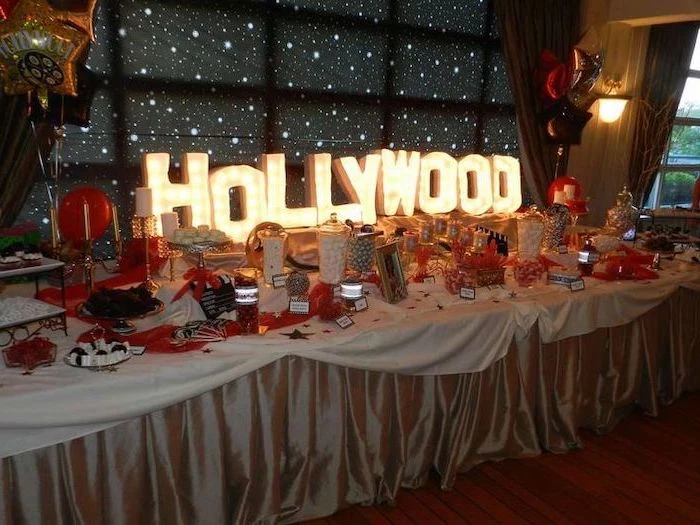
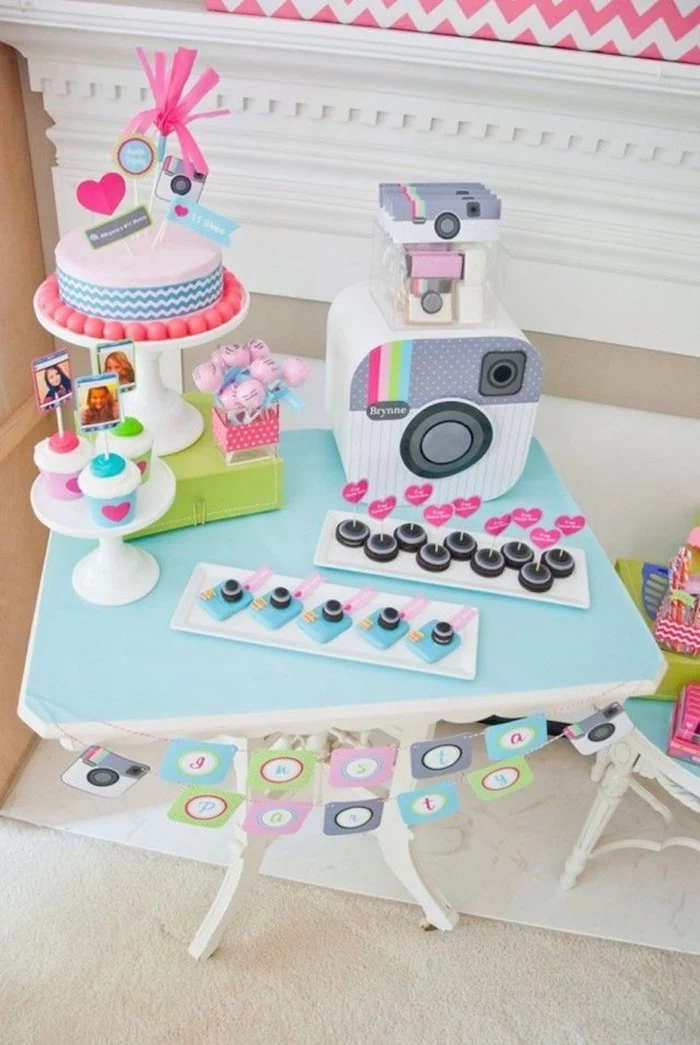
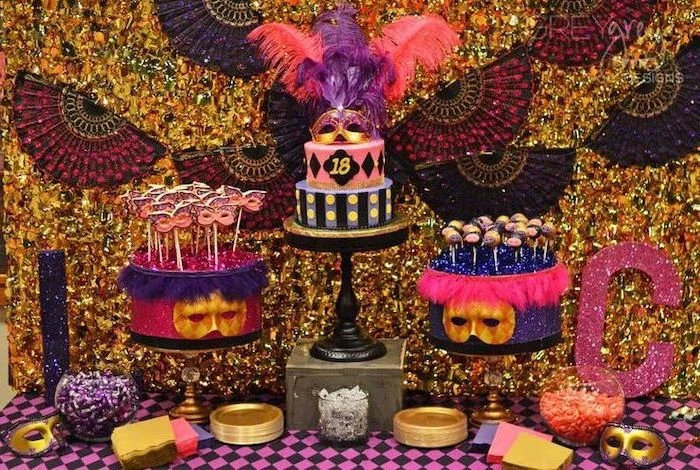
Level up your music game beyond just a phone in a cup. A powerful, portable Bluetooth speaker is a must-have. Models like the JBL Charge 5 or the Sonos Roam deliver excellent sound and have a long-lasting battery that will easily outlast the party. Place it centrally for the best audio coverage.
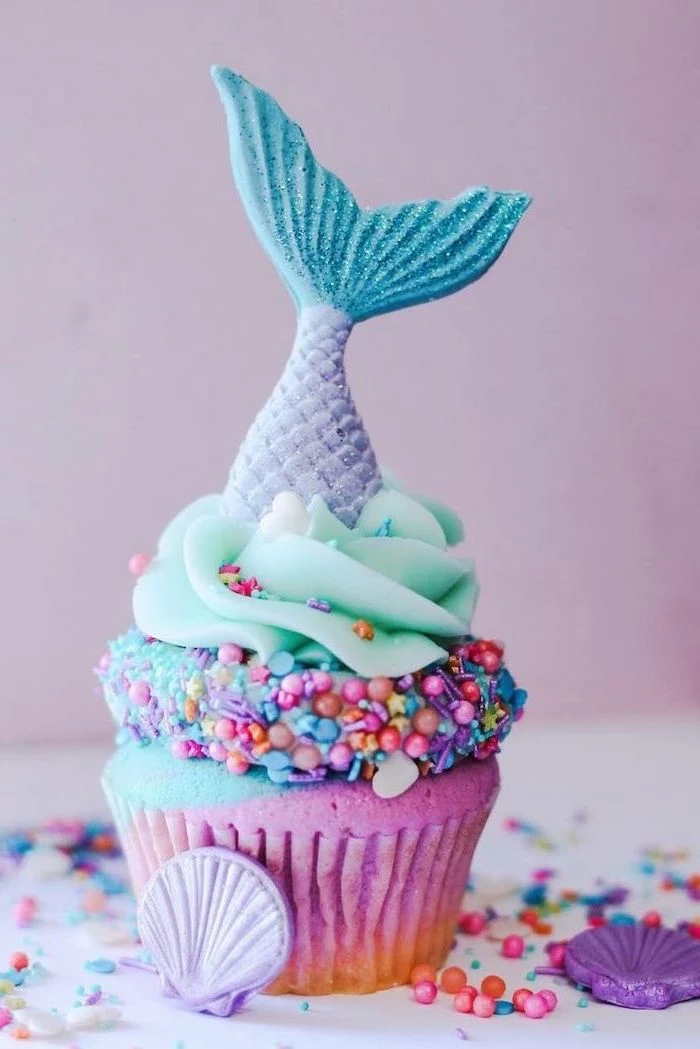
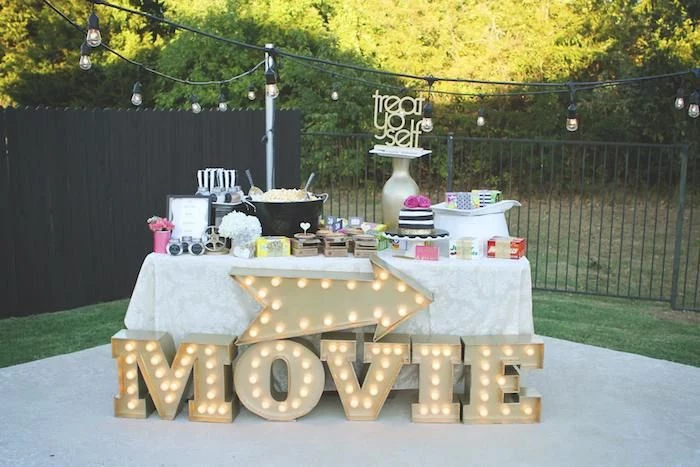
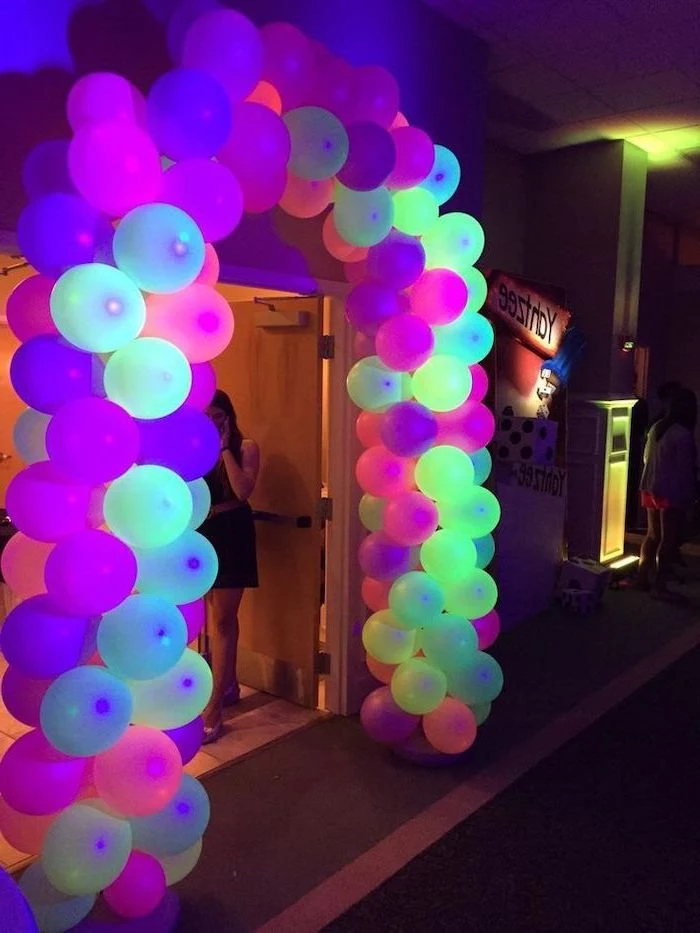
Don’t have them text you the details. Create a quick, cool digital invitation using a free tool like Canva or Evite. They offer modern, teen-friendly templates that look professional. It makes the event feel more official and makes it incredibly easy to track RSVPs, which is essential for planning.
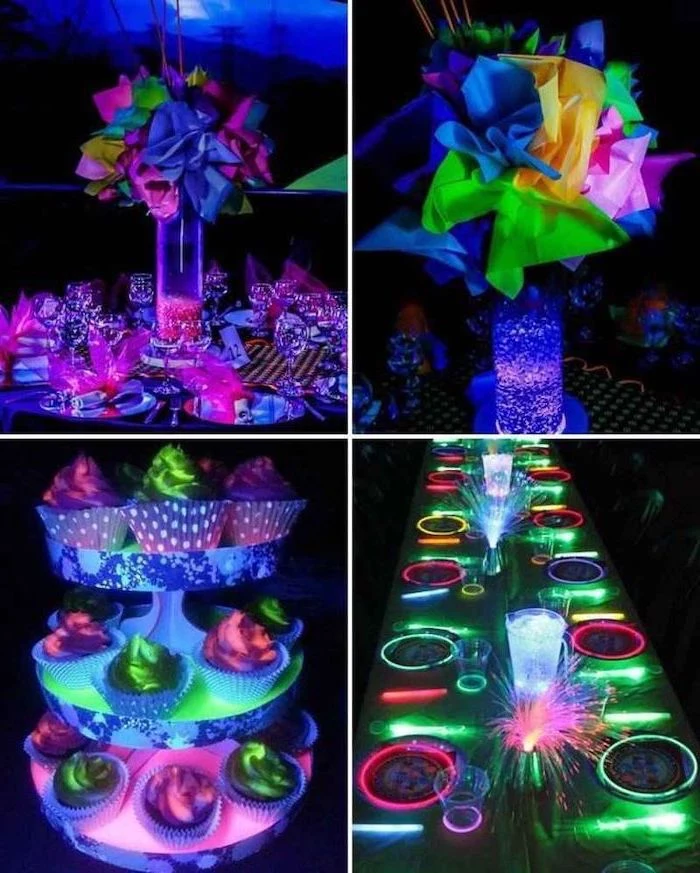
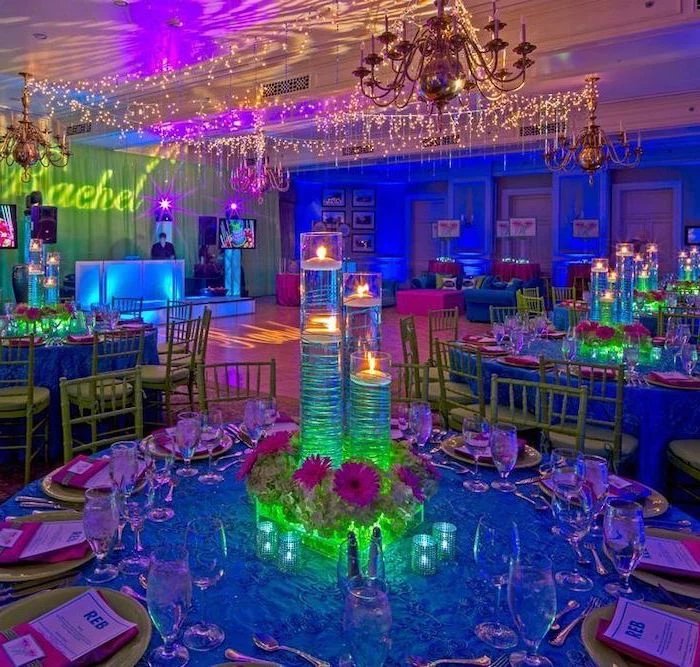
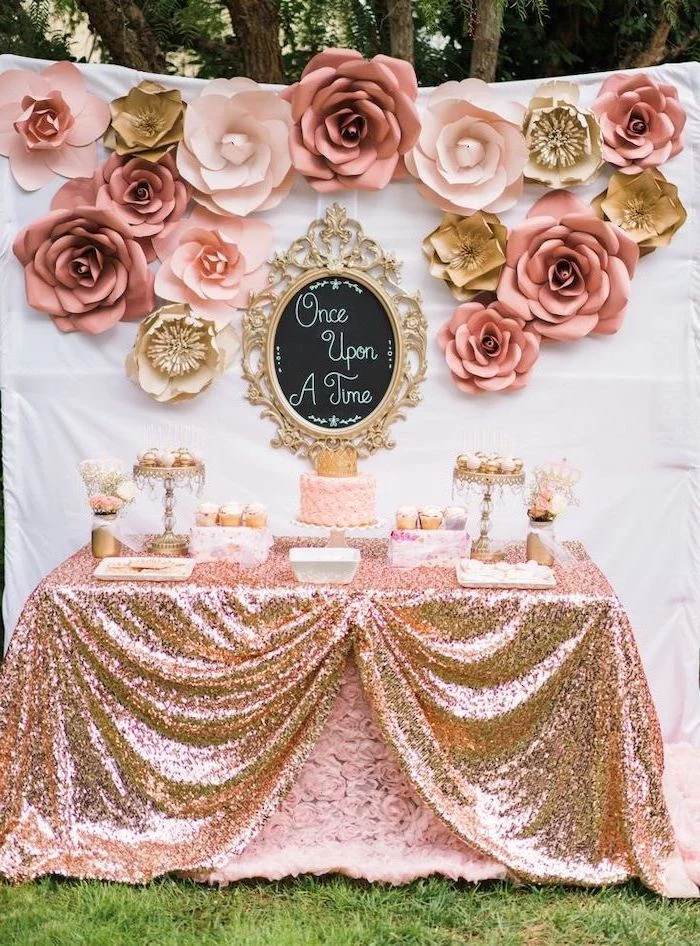
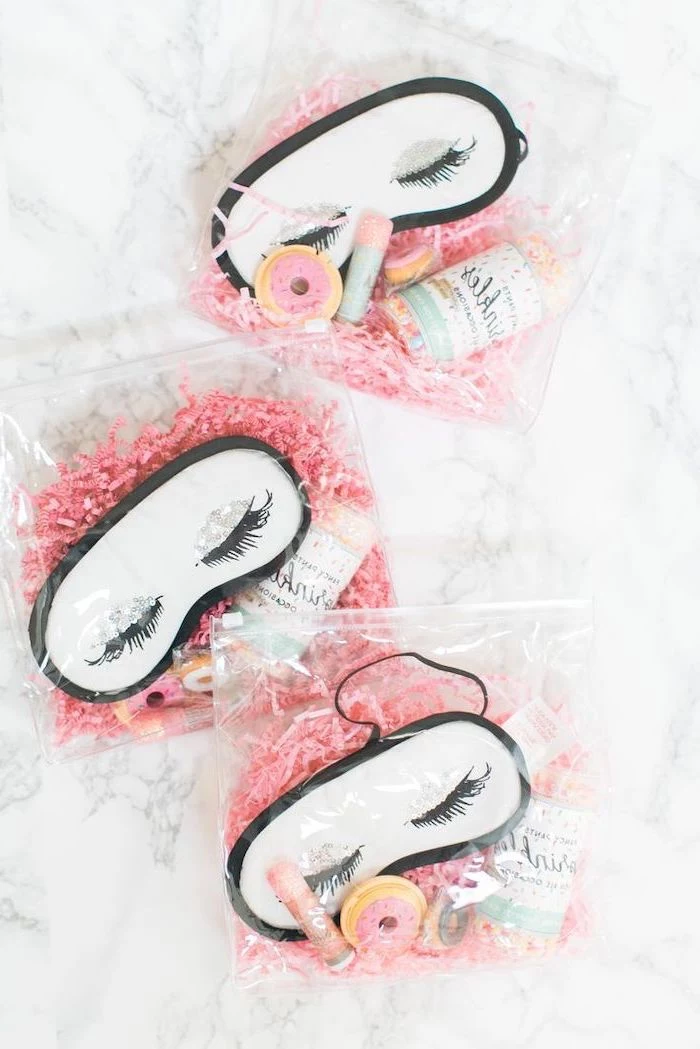
- Swap disposable plates and cutlery for reusable bamboo or even your regular dishes.
- Use fabric tablecloths and decorations that can be stored for future events.
- Offer a large water dispenser with fruit slices instead of individual plastic bottles.
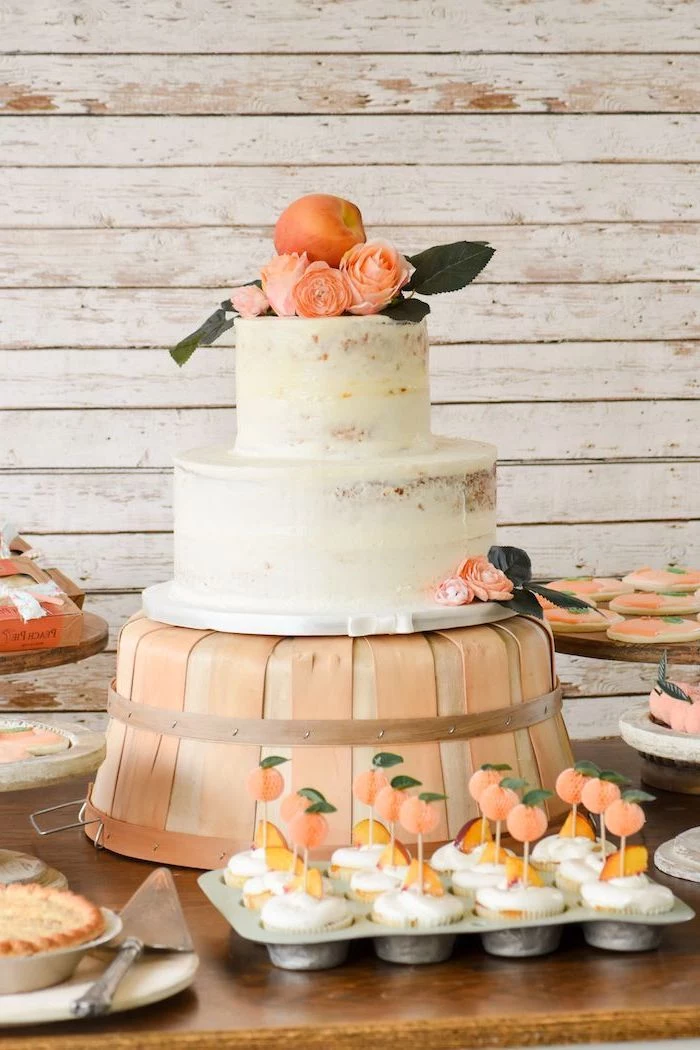
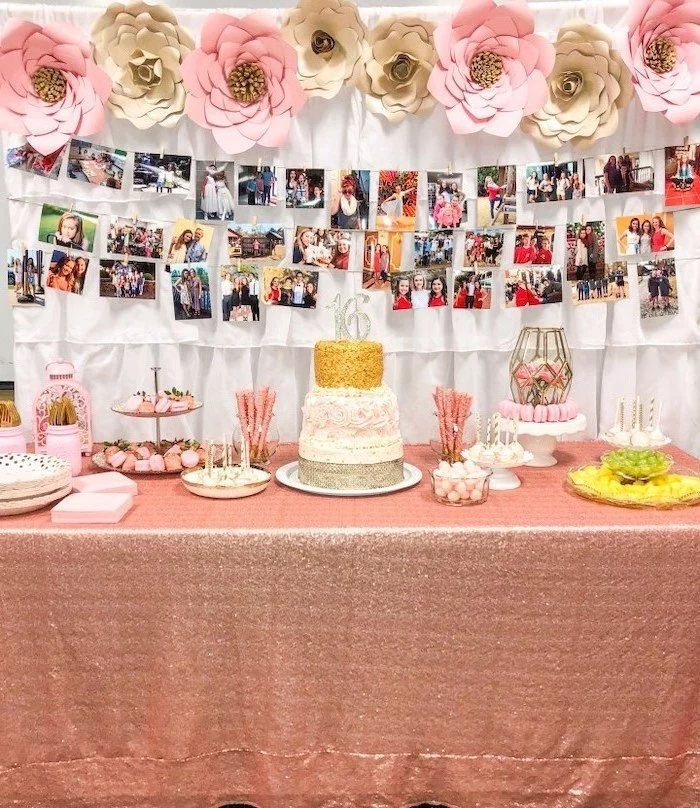
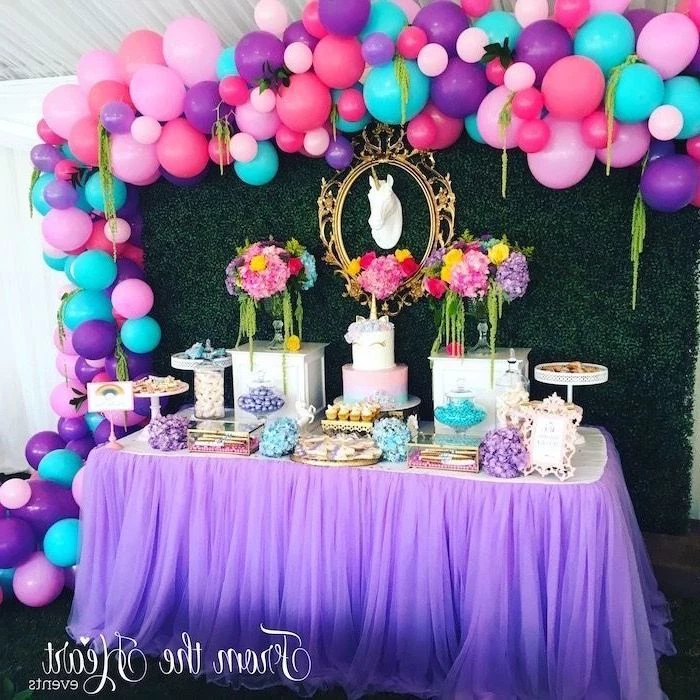
Themed Party: Great for teens with a specific passion (a favorite movie, a video game, a ’70s roller disco). It provides a clear direction for decorations, food, and even outfits. The risk? It might feel too restrictive or “childish” if not executed with a modern touch.
“Just a Vibe” Party: Focuses on atmosphere—think “Glow Night,” “Cozy Bonfire,” or “Rooftop Sunset.” The decor is more about mood (lighting, textures, colors) than specific characters or objects. This often feels more mature and allows for more social flexibility.
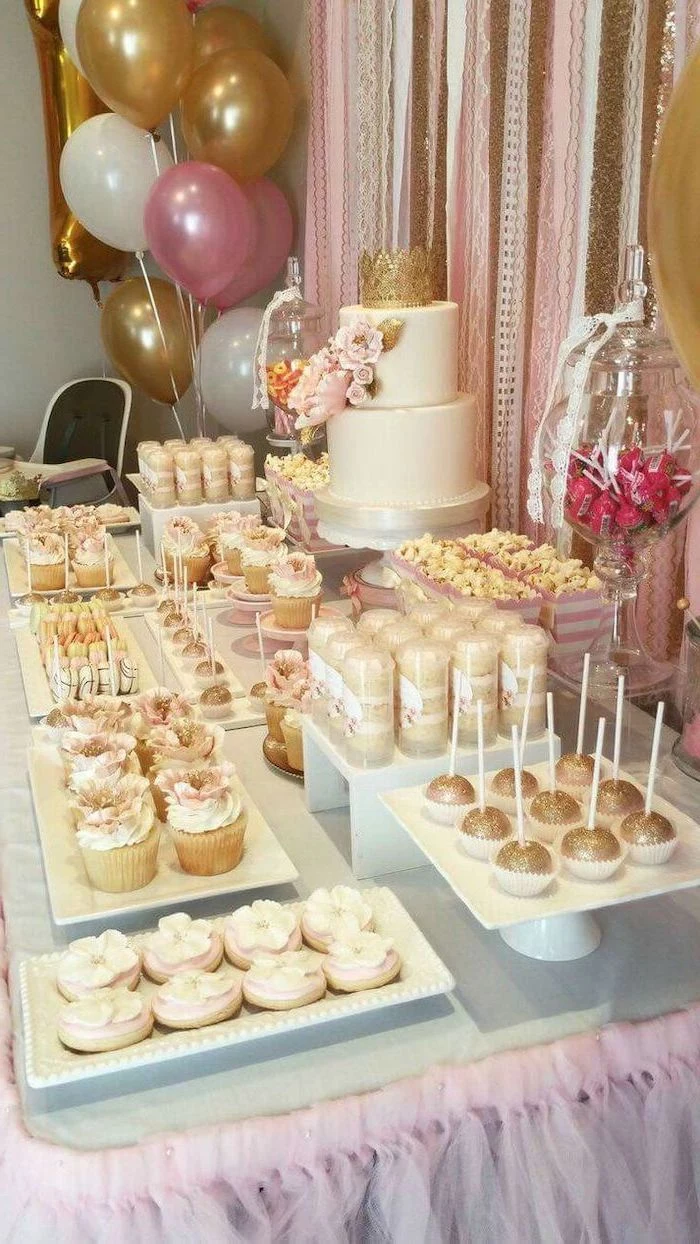
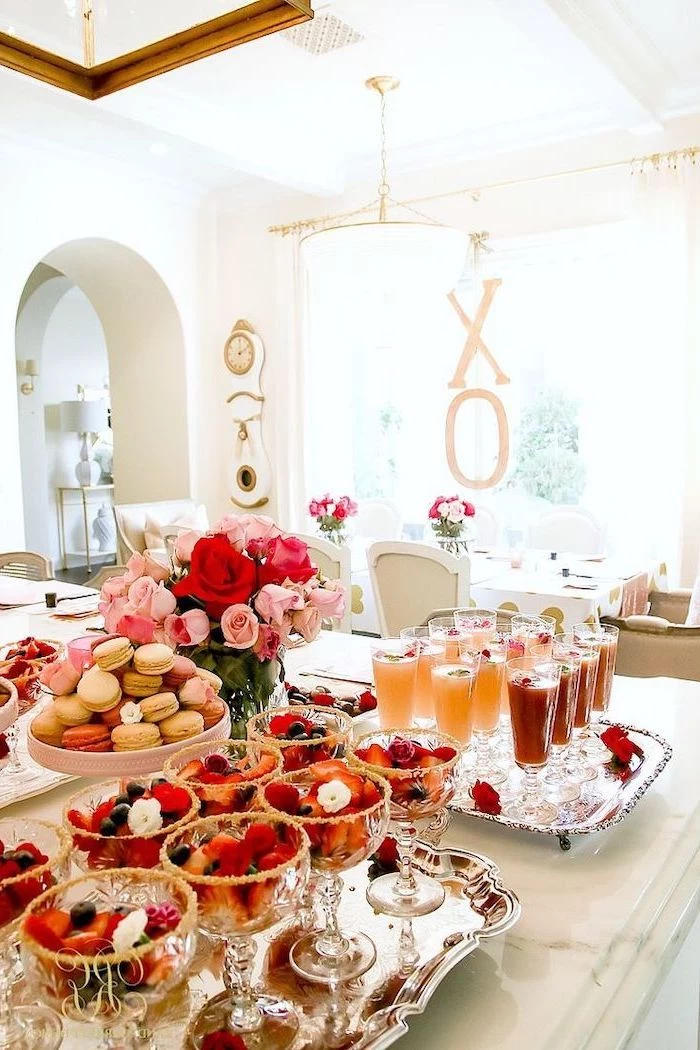

A silent disco is the perfect solution for noise-sensitive neighbors.
You can rent headsets surprisingly affordably from online companies. Each guest controls their own volume and can often switch between two or three channels of music. It’s a unique, hilarious, and unforgettable experience—plus, watching a room full of people dancing in silence is a sight to behold.
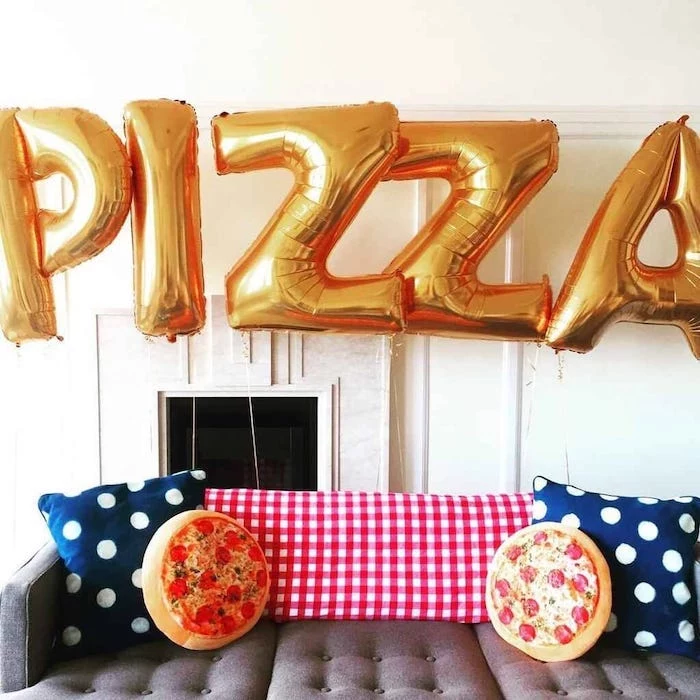
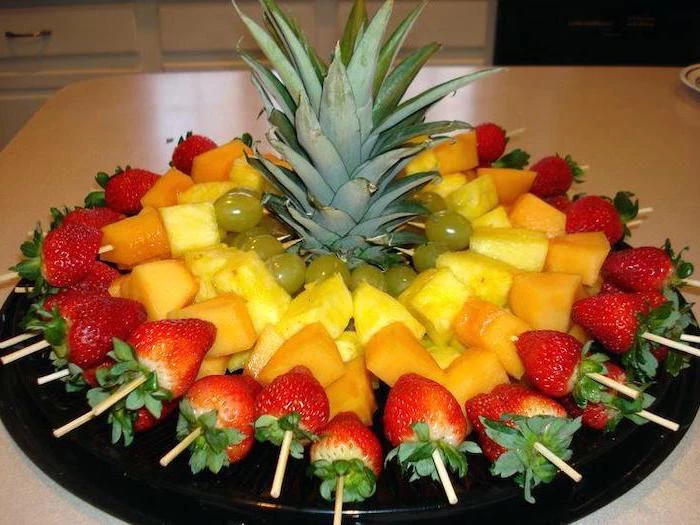
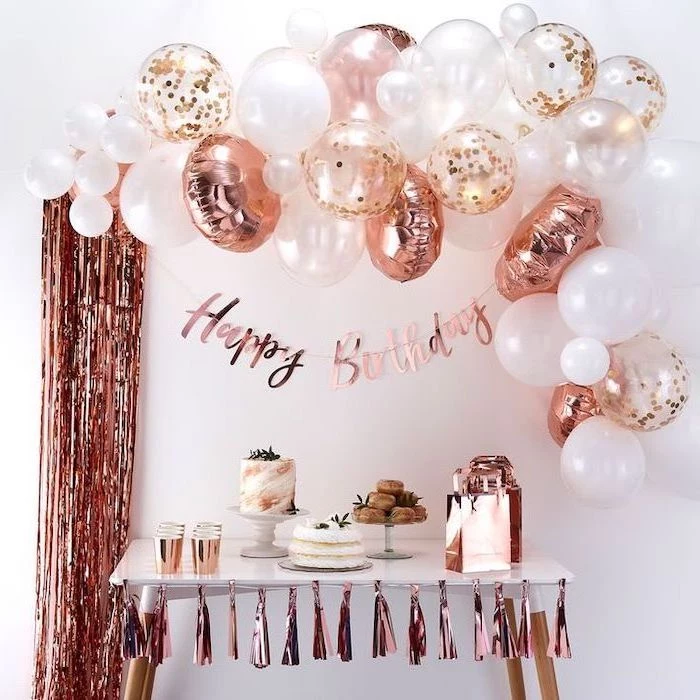
The party is for a milestone birthday like a Sweet 16. How do we make it feel special?
Incorporate a moment of recognition without making it cringey. Skip the formal, long-winded speech. Instead, try a “memory jar” where guests write down a favorite memory with the birthday teen upon arrival. Later, the teen can read a few aloud. It’s personal, touching, and interactive.

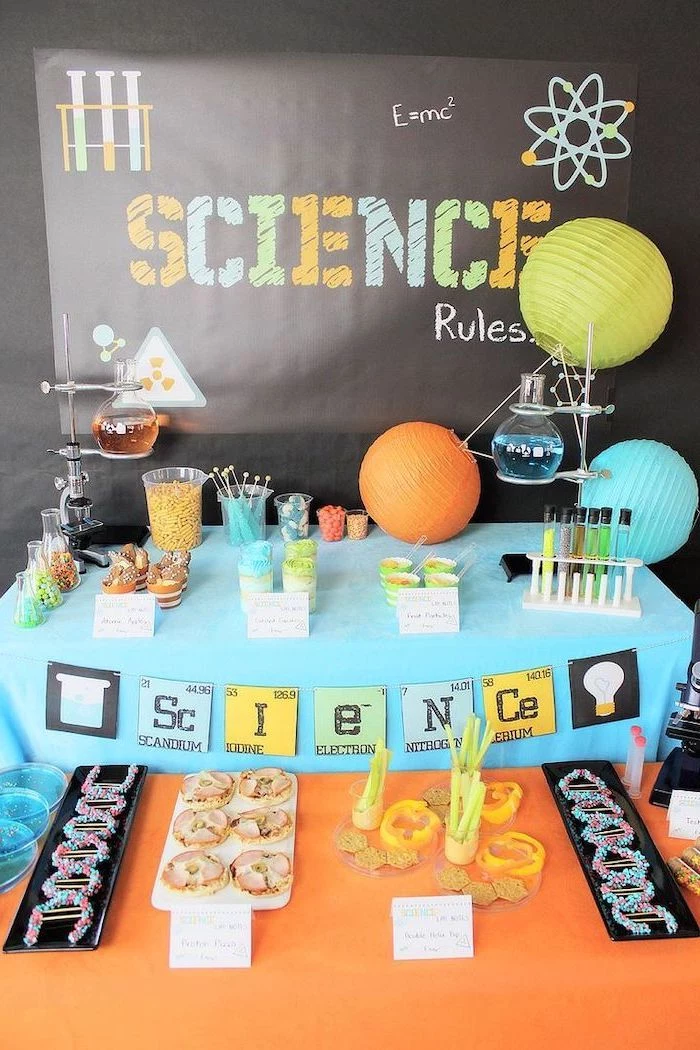
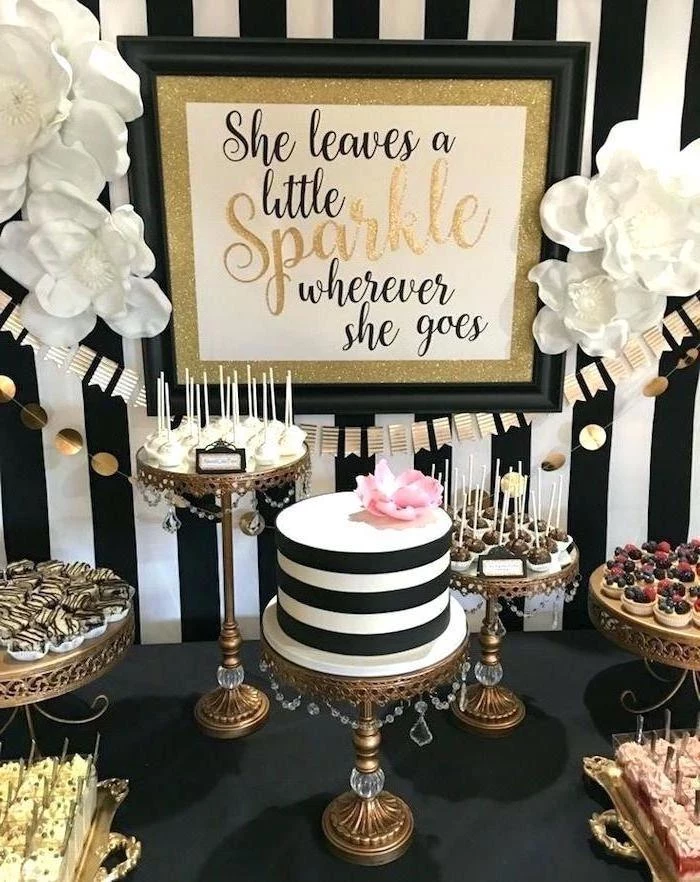
For a gaming-focused party, consider using Jackbox Games. They’re played using phones as controllers, so no extra equipment is needed, and they can be projected onto any TV or screen. Games like Quiplash and Trivia Murder Party are hilarious, easy to learn, and perfect for breaking the ice among a group.
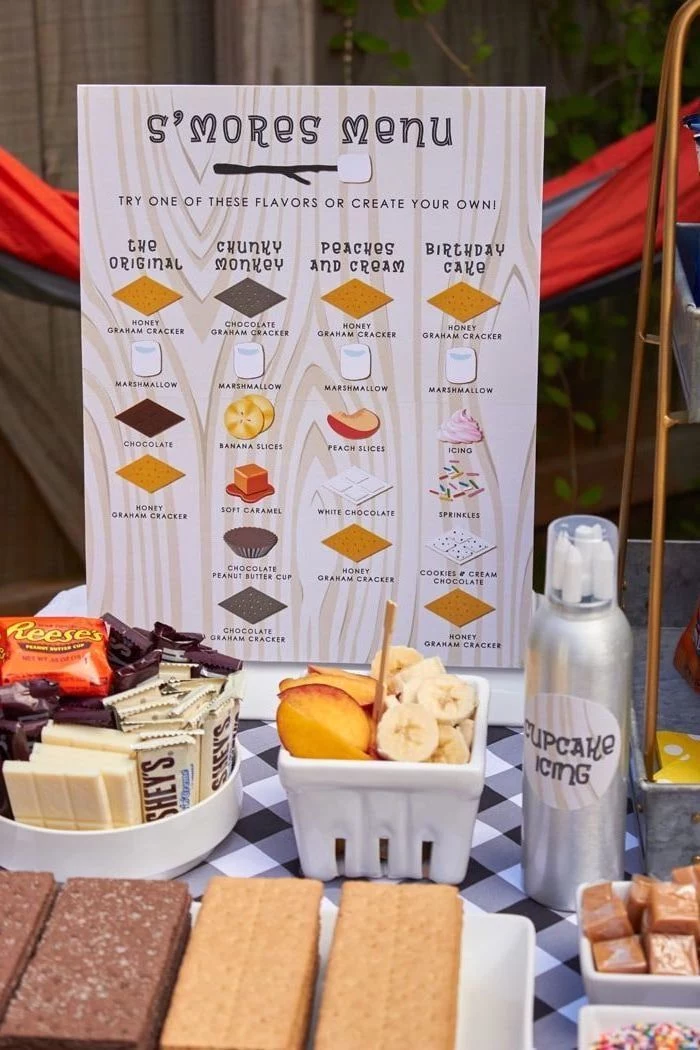
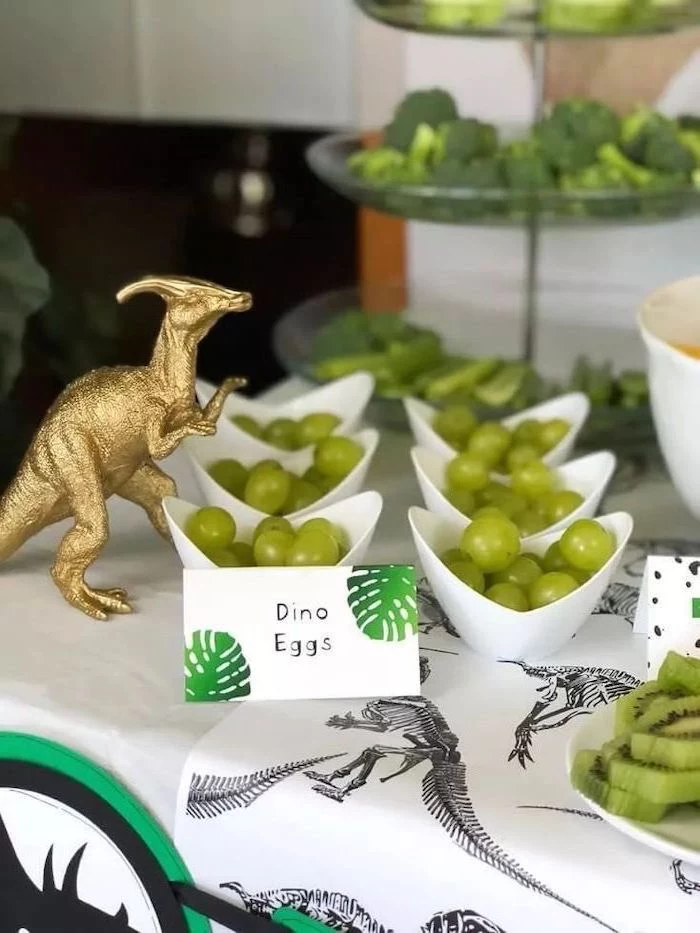
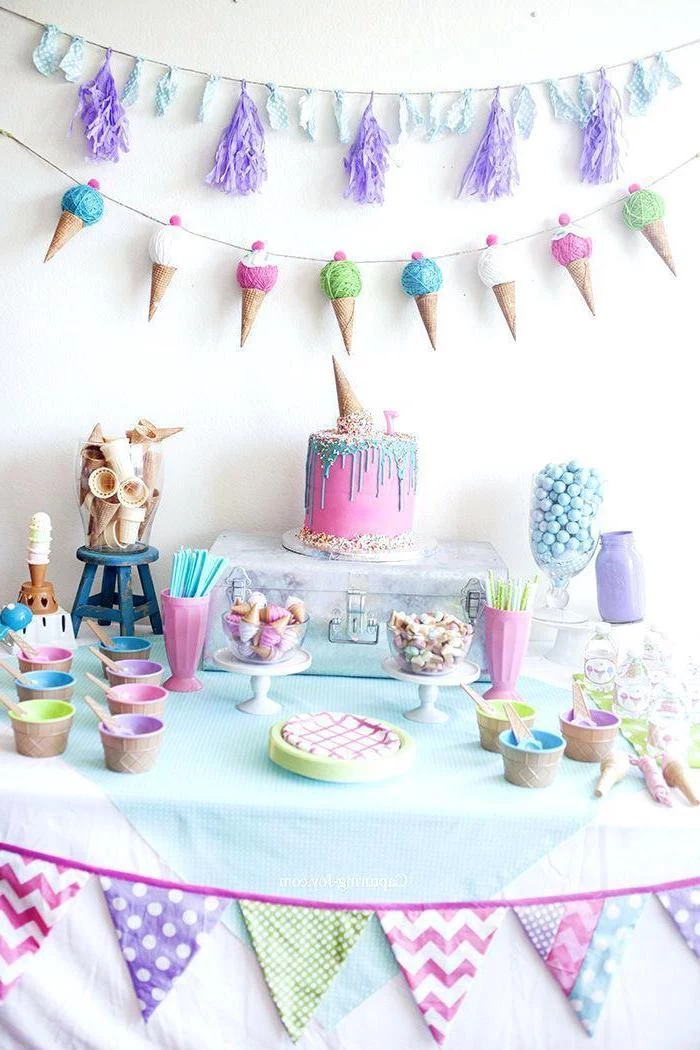
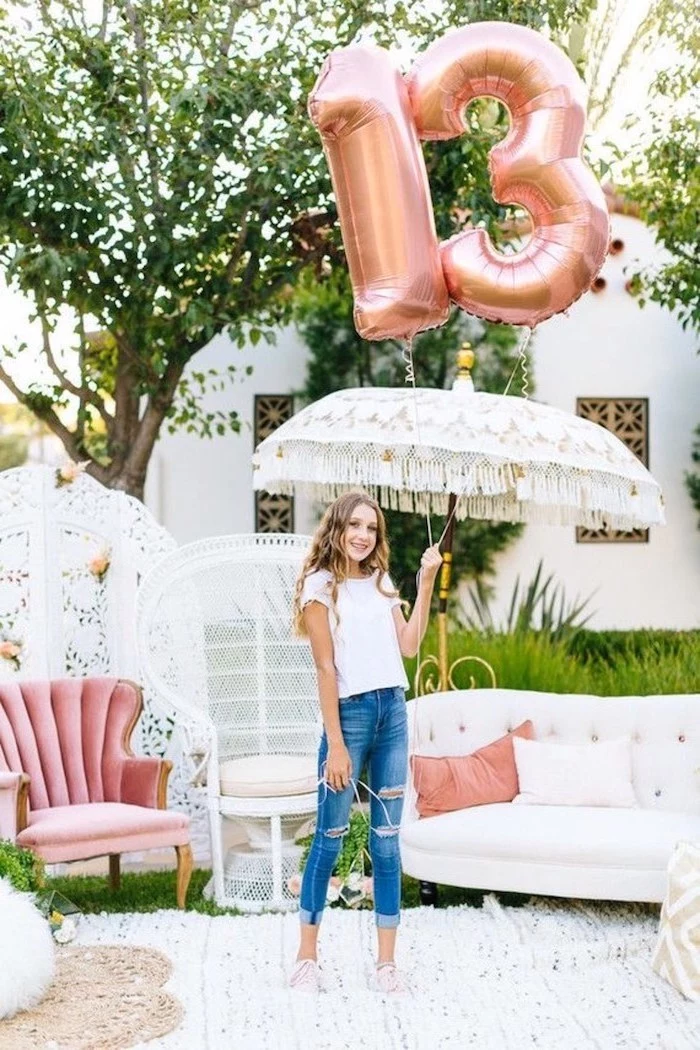
Crucial detail for outdoor parties: Have a solid Plan B for weather. This doesn’t just mean moving inside. It means having an indoor setup that feels just as intentional, not like a sad consolation prize. Maybe you have a movie projector and popcorn ready to go, or a set of board games for a tournament. Discuss the “rain plan” with your teen beforehand so it’s a smooth transition, not a panic.
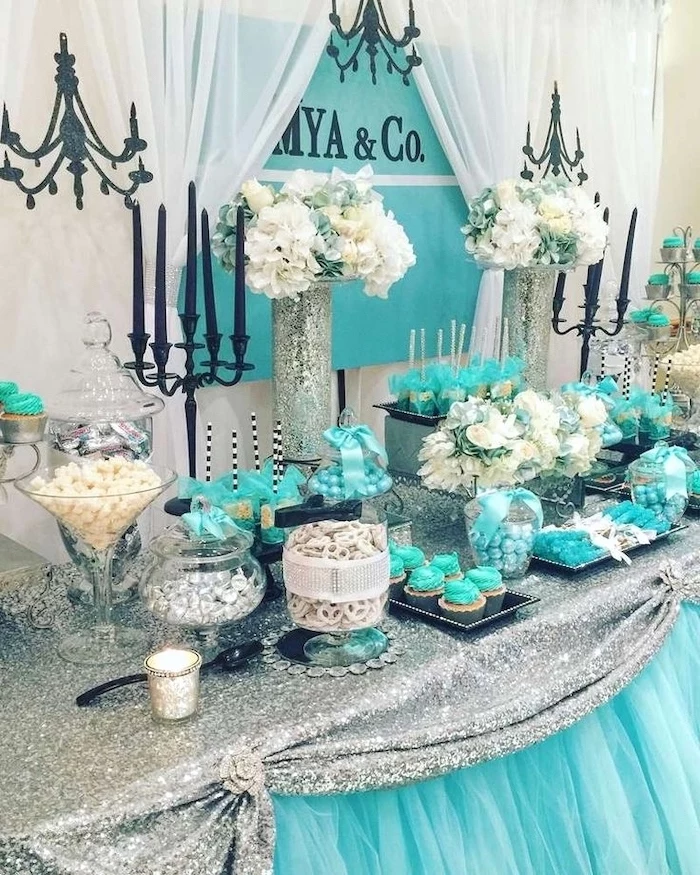

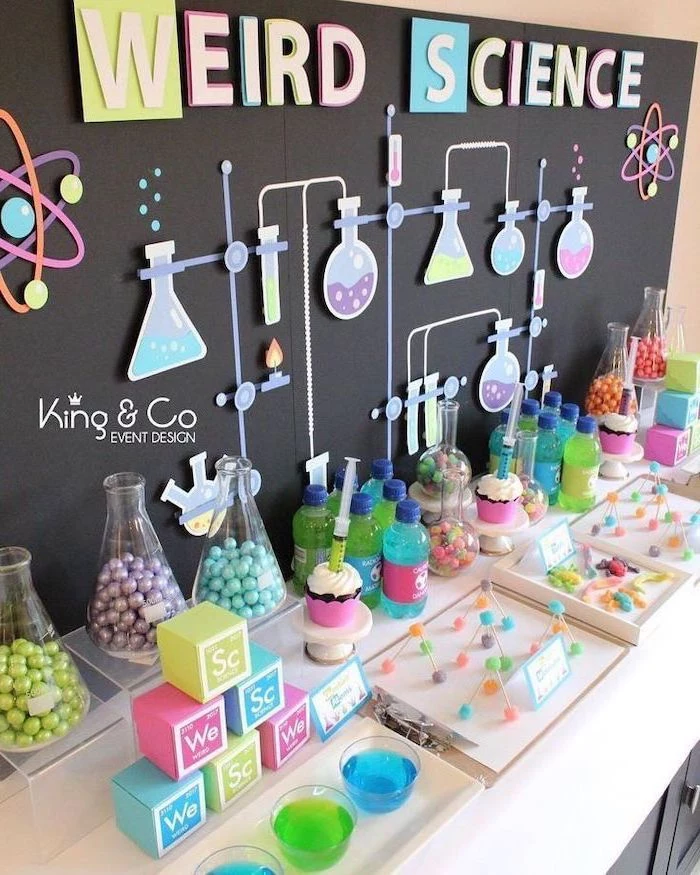
Instead of a single, large cake, consider a dessert board. It’s more casual, offers variety, and looks amazing in photos. Arrange a mix of mini cupcakes, brownies, macarons, chocolate-covered pretzels, and fresh fruit on a large platter. It caters to different tastes and encourages grazing throughout the party.
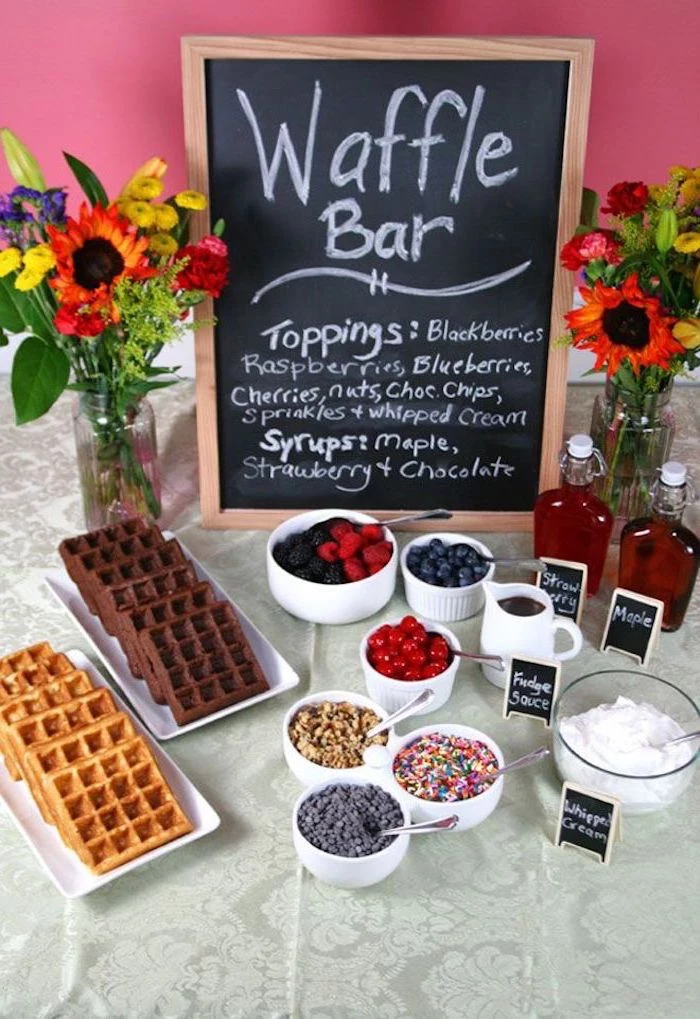
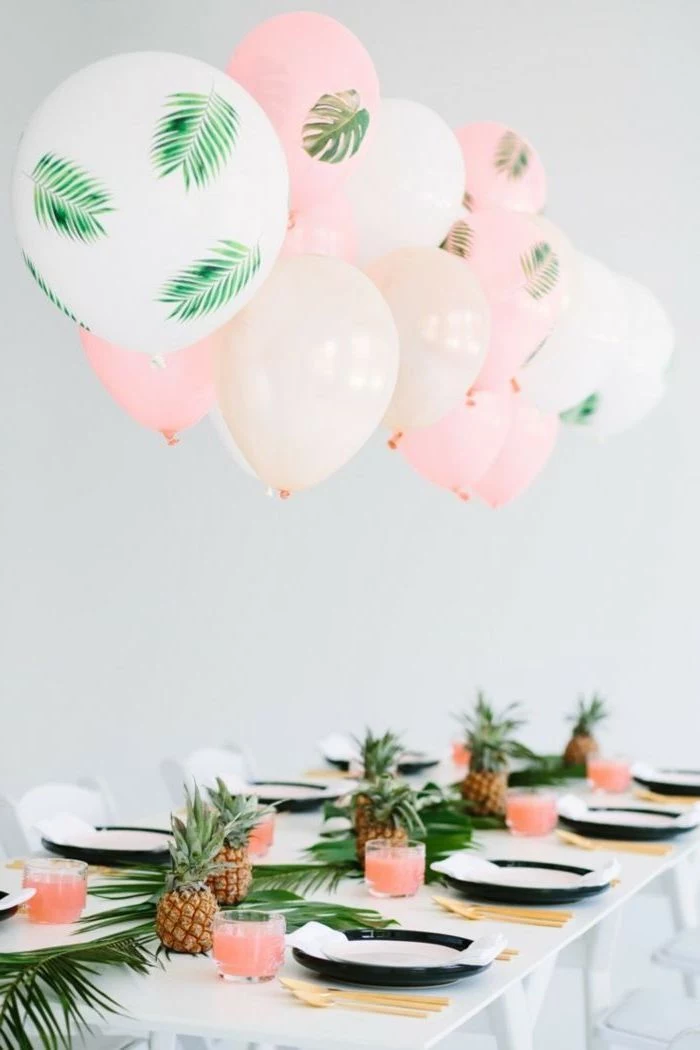
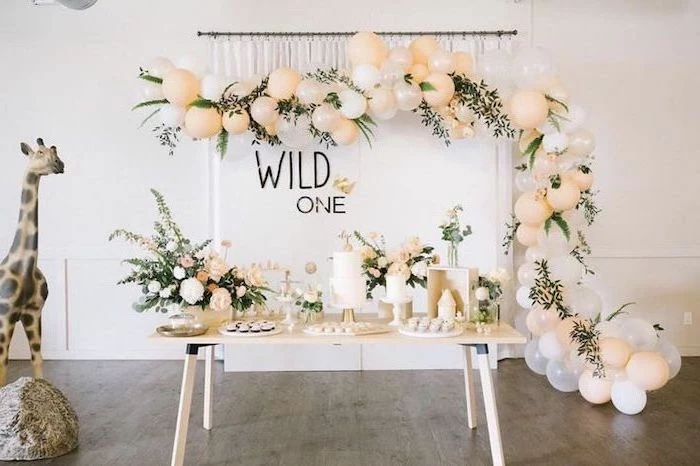
- It provides an instant, high-energy, and modern atmosphere.
- It requires almost no other decoration to look impressive.
- It makes for incredible photos and videos.
The secret? A blacklight party. All you need are a few UV blacklight tubes or bulbs, and then you can hand out glow sticks and neon face paint. It’s a high-impact theme with a surprisingly low setup effort.
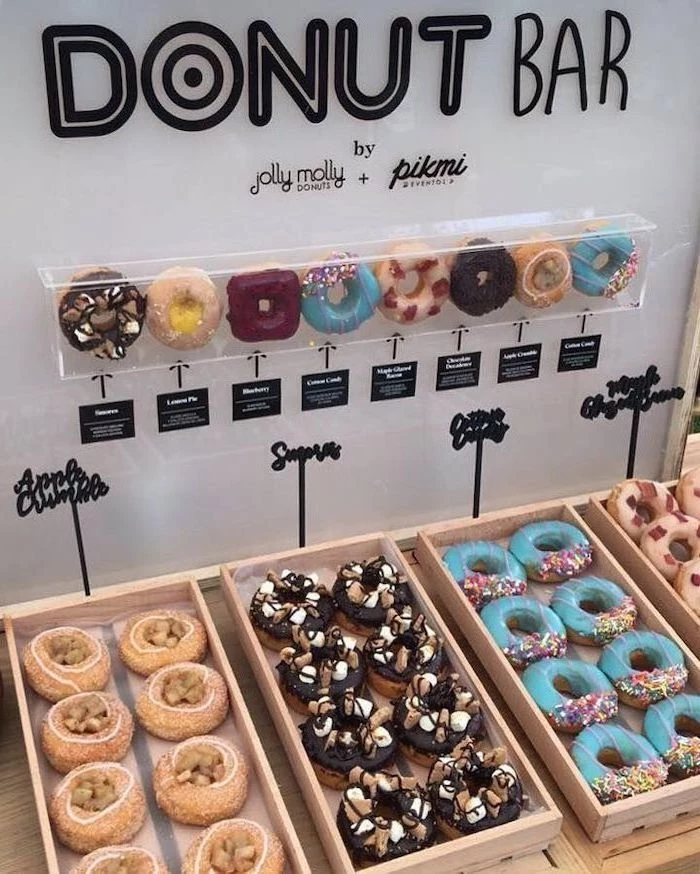
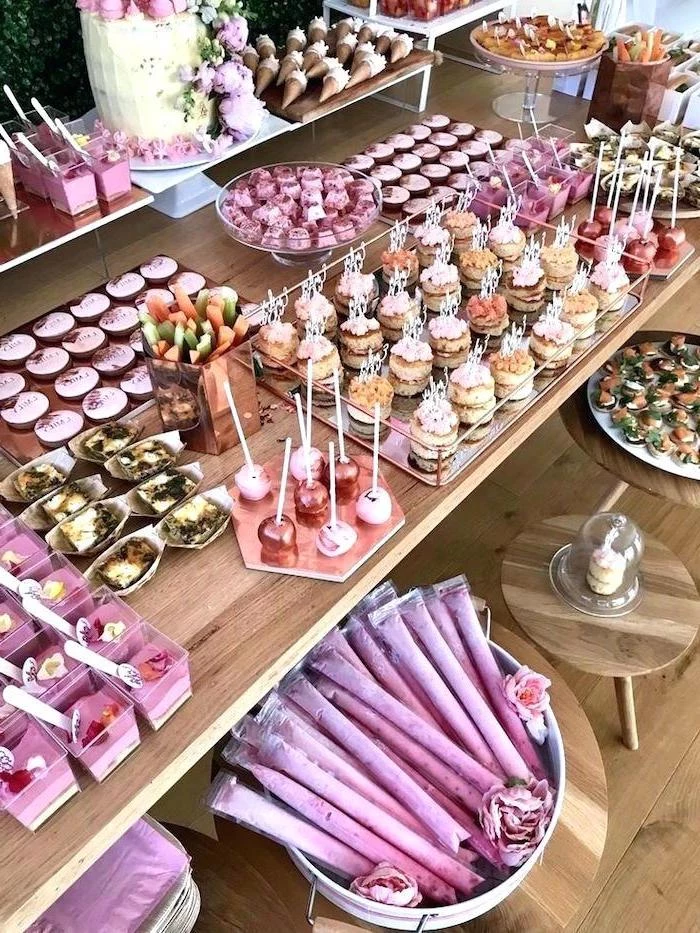
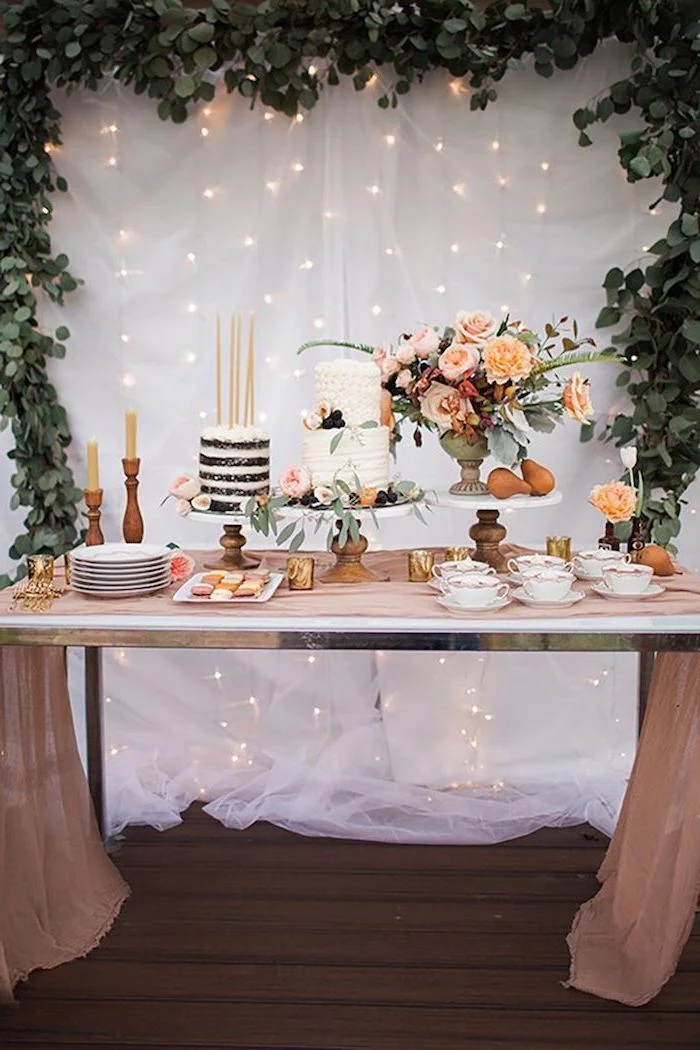
The 10 PM Rule: For younger teens (13-15), having a clear end time is key. A three-hour party, say from 7 PM to 10 PM, is often the sweet spot. It’s long enough to feel substantial but short enough to prevent boredom or trouble from setting in. Communicate the end time clearly on the invitation so other parents know when to pick up.

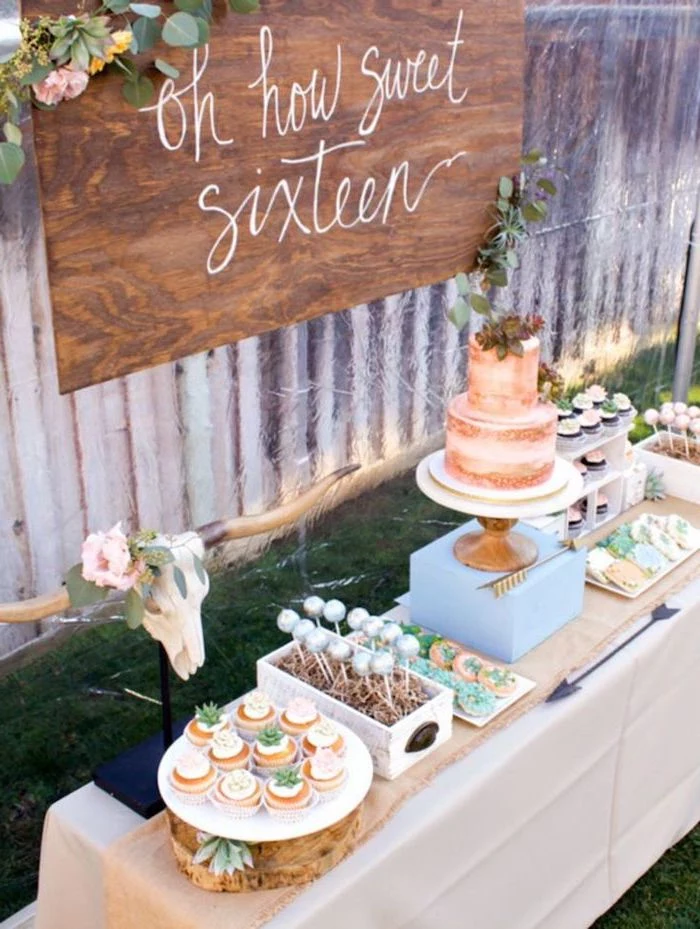
Don’t get stuck with the entire cleanup. The modern party-planning approach includes the “After-Party Strike Team.” Make it part of the deal with your teen from the beginning: they and a couple of their closest friends help with a 30-minute blitz cleanup before everyone crashes. Pizza and gratitude are excellent motivators.



